All the way back in early January at CES Polar announced the V800 multisport GPS watch. This would be their first multisport integrated GPS watch to market, combining the RC3 GPS watch along with the RCX5 non-GPS multisport watch. On top of that, they’d also be integrating in their Polar Loop activity monitor functions – effectively making a powerhouse of a fitness watch.
Since even before the announcement I’ve been using the V800, with now daily usage in the past couple months as it has neared release, which ultimately culminated last week in the first final software release. As such, I’ve got a pretty good idea on where things work, and where there may be a few holes in the story.
To be clear, Polar sent me over a V800 to start testing with until retail availability. Like always, I’ll be shipping that back to them in Finland in the next few days and going out and getting my own via regular retail channels. That’s just the way I roll.
Lastly, at the end of the day keep in mind I’m just like any other regular athlete out there. I write these reviews because I’m inherently a curious person with a technology background, and thus I try and be as complete as I can. But, if I’ve missed something or if you spot something that doesn’t quite jive – just let me know and I’ll be happy to get it all sorted out. Also, because the technology world constantly changes, I try and go back and update these reviews as new features and functionality are added – or if bugs are fixed. So – with that intro, let’s get into things.
Unboxing:
The V800 comes in two flavors. That with a heart rate strap, and that without a heart rate strap. Down the road, it’ll also come in a blue flavor.
In the meantime, I’ll go ahead and show you the unboxing for the model with the heart rate strap. In putting this together, the box I had is from a few months ago – so it’s plausible it looks slightly different than the final boxes. No worries though actual contents are the same.
Inside the packaging you’ll find the heart rate strap, heart rate strap pod, USB charger, and then the watch still attached to the packaging.
Take everything out, and here’s your package.
Looking at the pieces briefly, the heart rate strap included is the H7, which is Polar’s Bluetooth Smart + Analog transmission for underwater usage (and gym equipment like treadmills).
Next, the USB charger will snap onto the V800 like a clamp. The other end will connect to your computer.
Finally, the watch itself:
And, here’s the back:
Button-wise you’ve got five to work with. On your right side will be page up and page down, and then the red button is for starting, laps and selecting/confirming objects in the menu.
While the left side is for the light (plus a menu while running), and then the back button (which pauses/ends the workout).
Now that everything is unpacked, let’s hit up the size and weight comparisons.
Size & Weight Comparisons:
Above, you’ll find all the major units in the high-end multisport market today, plus a few others that are relatively recent.
From left to right: Garmin FR910XT, Adidas Smart Run GPS, Suunto Ambit2, Polar V800, Garmin Fenix2, Suunto Ambit2 R (and Ambit2 S), Timex Run Trainer 2.0, TomTom Runner/Multisport, Garmin FR620, and finally the Garmin FR220.
As you can see the V800 is in the same ballpark as other watches. It’s a little bit skinnier (width and depth) than most other units, but still tends to be about the length:
Looking at past Polar watches that it evolved from, you can see it’s got a much sharper display, as well as overall sleeker design.
Thickness-wise though, it’s roughly the same as those:
When I give the watch a weigh-in, the V800 comes in at 82g, right inline with all the other multisport units on the market:
Fenix2 – 85g
Fenix1 – 83g
FR910XT – 83g
Ambit2 – 89g
*Note: Polar sent me a photo showing the official measurement on a super-fancy scale at 79.88841g. When I get a new unit I’ll re-measure. But at the moment, everyone is on the same scale, so to speak, with the above numbers.
Ok, now that we’ve got all the comparisons done – let’s start using the thing.
Running:
In many ways, the V800 is really at its best while running. That’s mostly because it’s essentially like taking the RC3 of the past and adding some customization. Plus, it is a watch after all (versus a cycling head unit). Which is to say that if you’re a pure cyclist, I’d be looking at other options (potentially Polar’s V650 in the future). Whereas if you’re purely a runner (non-multisport), then the V800 is still a very viable unit.
With that in mind, the first thing you’ll want to do is pair up the sensors (such as your heart rate sensor). You’ll do that in the general settings area. I’ve got an entire section dedicated to sensors a bit later, so I’ll hold off on all the details till then.
Next, depending on where your watch was shipped from you’ll want to change the date/time. Unfortunately, the V800 doesn’t gather your current time based on GPS (like most fitness watches do). It only takes about 10-15 seconds to change it, but it would be a nice feature (or, to sync to your phone’s time instead like most activity trackers do).
With all that set you’ll press the red button. This will bring you to the screen with your configured sport profiles. Sport profiles are basically modes that you can configure for a slew of different sports. While you can’t create your own sport (Cow Tipping), you can choose from a huge list of sports and then tweak all the settings.
Only modes that you’ve created/configured will show up on the watch. In my case, we’ll use the up/down buttons to get to the Running mode. Once you’ve done that it’ll go ahead and initiate the search for any sensors. Within the context of running that would be the heart rate strap and running footpod (both are optional). You’ll see little icons displayed on the screen once connected, and in the case of the heart rate – you’ll see your BPM value displayed:
While the unit is connecting to the sensors it’s also searching for GPS signal. In my testing I’ve found the GPS acquisition time acceptable but not great. It doesn’t appear to pre-cache satellites like all other fitness devices on the market for the last 1-2 years do.
So sometimes GPS acquisition takes a minute or more. If you start in the same place as you last stopped however, it’ll tend to find it in a few seconds. Here’s an example video showing the acquisition time, which in this case was about 30-40 seconds depending on where you measured the ‘start’ from. The unit had been turned on earlier in the day in the same locale.
For comparison, here’s at the exact same spot and time (same run) the FR15 and FR620’s acquisition times.
With GPS all ready, you’ll go ahead and press start.
I do want to point out to definitely wait for GPS acquisition to be found before you start running. If you don’t, it’ll take much longer and you won’t get accurate data (distance/pace/etc…). After pressing start it’ll bring you into your configured data pages.
Assuming you don’t have a footpod your pace and distance will come automatically from GPS. Again, a footpod is NOT required to get speed/distance/pace while outdoors (that’ll come from GPS).
While running you can change the viewed data pages at any time by pressing the up/down button. You cannot however re-configure those pages (only online via computer). Each page can have up to four pieces of data on it (again, configured online). Here’s a handful of screens from various runs:
You can change the screen display during activities (but not in regular watch mode) to either be white text on black background, or the inverse:
Since I mentioned the footpod a minute ago, let’s talk about that in more depth. Officially known as the ‘Stride Sensor’, the running footpod allows you to get cadence information (indoors/outdoors), as well as pace/distance information when indoors.
The Polar variant of the footpod is unfortunately the size of a Twinkie, and the largest in the industry.
Now, there are some things to be aware of with the footpod. First is that like past Polar units, the footpod will override any GPS pace/distance data. There is no option to change that. What there is however is an option to determine whether the unit will automatically calibrate the footpod at the start of each GPS run, or, whether to use a set calibration value. This is configured within your sport profile (running in this case):
For me however, it never seems to automatically calibrate anything (with both the Polar BLE footpod and other footpods). Rather, it just sticks to some unknown value. As a result, my distances are off. What’s unfortunate here is that the common industry thing to do is to take cadence from the footpod and then pace from GPS (unless you lose GPS in a tunnel). Or, to offer a configuration option as to which source to pull from.
In any event, the footpod can then be used for indoor running to get pace and distance while on a treadmill (per the calibration values set). Note that the V800 does NOT gather cadence from the wrist like most newer running watches, nor does it do pace indoors on a treadmill like most newer running watches. At present, that’s not on the planned features list – though technically speaking the unit has the hardware to be able to do it.
Assuming you do have the footpod however, you’ll see cadence displayed on the unit, as well as stride length:
Further, you’ll see this data afterwards on Polar Flow.
Next when it comes to instant pace the V800 is very smooth and yet at the same time responsive. Below is a video I shot that shows me doing one of my intervals from last night’s workout. I started from the barely walking position and then accelerated up to pace. I initially turn a corner (90° onto a bridge), and then you see a slight slowdown as the bridge rises, before I stabilize the pace (and the bridge flattens out). There was no running footpod used/attached here, just pure GPS instant pace (shown in minutes/mile):
Next, let’s look at the workout functionality. The V800 includes some basic workout target modes that can be used. It does not have a separate/instant interval mode. These workout modes are all configured on Polar Flow (with computer) first, and then transferred to the watch for use during an activity. In my case, I created my Saturday long run workout on Polar Flow.
This had a main chunk, and then some intervals at the end. You can see how I’ve structured these here and even done a ‘repeat’ function within it:
Now, there are some downsides to the tool (via computer). First is that the only ‘target’ you can set is heart rate (+ distance or time). No pace/cadence/speed/etc… goals that are fairly common. Also, creating repeats can be a bit frustrating the way the tool is designed because it always wants to randomly select different segments to repeat. So it may take you 1 or 12 tries to get the repeats right. Eventually you’ll get it all set though.
Note that you’ll actually create workouts within the ‘Diary’ portion after selecting a given day and adding what’s called a “Training Target”. This too is fairly confusing since I tend to have a collection of workouts I use and don’t really think to associate them with a specific day. I wish this was just a separate section that I could easily get to and make workouts. Plus, “Training Target” doesn’t really convert into English as the idea for a pre-scheduled structured workout. Rather, most would think that would mean an end-goal (i.e. run 10 miles).
In my case, I set this one as a ‘Favorite’ so I can find it easily on the watch. Thus, once back outside I instead scroll down to favorites:
Then from there I selected my workout:
And with that it brought me to the usual page prior to a run. Once I press start, I’ll get a new page that indicates what I should be doing for each step. In this case, it shows a little HR bar that shows the zone I set for this step. Down below it shows how much time is remaining on this step:
This new page is in addition to any of your usual sport-defined pages. If you are above/below zone the unit will chirp and vibrate at you telling you that you’re screwing up. It’ll continue to do this until you get with the program.
Once you reach the next step it’ll automatically show you a new screen for that next piece. Note that it will not give you a count-down warning however (beep or display). It simply goes right into the next piece.
Now in addition to this custom workout mode, there are two somewhat simpler modes that you can create as well. The first is called ‘Race Pace Target’ and is basically like a virtual pacer. You specify the duration and distance, and it figures out the pace:
The above can be configured not only on the computer, but also on the watch at the last second:
And here’s how it’ll look during a workout, like a virtual partner of sorts. Shows you how far behind (5 seconds in this case) you are from the pacer, as well as your current pace and heart rate (along with the goal pace – 6:53 in this case):
The second is simply called ‘Quick’. In this mode you choose one metric and then it’ll void the other metrics out. Sorta like a goal.
This mode shows you a progress chart during the workout:
Next, whether you’re in a structured workout or a manual workout you can create laps at any time by pressing the lap button. Additionally, you can also configure ‘Tap to lap’, which allows you to whack the screen to trigger a lap. Tap to lap isn’t a touch-sensitive thing. Rather, it’s a whack-sensitive thing (accelerometer driven). Thus you need to give it a nice little thump to trigger a lap.
I have found though that tap to lap kinda doesn’t really work while cycling. The bumps in the road will constantly trigger it – so make sure you turn it off there and just use the buttons instead.
Further, you can also use automatic laps, which are separate (in addition) to manual laps. These can be configured for example for every 1-mile (or kilometer), and then will automatically show on the display, as well as afterwards in Polar Flow:
Note that if you need to pause the unit you can simply press the lower left button once to pause. You’ll hold down said button for three seconds to then end and save the workout. Note that in the paused mode you unfortunately can’t view your current distance/pages (I really wish I could, drives me crazy).
After you’ve saved the workout you’ll be given a summary screen that shows your activity totals, including recovery times:
This information is also available on Polar Flow afterwards. With that, I’ve covered all the running functionality. Let’s continue on to the cycling side of things.
Cycling:
The V800 can be used in a cycling mode, like most other multisport watches. In this mode you’ll get all the same functionality as in running, plus the ability to pair to other sensor types like cycling speed and cadence sensors – and down the road, power meters. Further, in this mode you’ll also get included information.
In order to minimize re-hashing everything I wrote in the running section – everything is essentially the same there. The core difference though is that now the metric will be ‘speed’ (i.e. MPH or KPH), rather than pace (minutes/mile).
Further, when you start a ride you’ll get a new little icon if you happen to have a Bluetooth Smart Speed and/or Cadence sensor(s). These sensors can be used not only outdoors with GPS, but indoors on a trainer.
Note that the V800 will override the GPS speed with your speed sensor speed. So if you have a speed sensor setup but not properly configured (i.e. wrong calibration value), then you’ll get inaccurate distance and speed.
On the cadence front, if you have a Bluetooth Smart cadence sensor, you’ll get cadence information while cycling:
From a cycling standpoint the V800 makes for an ‘ok’ cycling computer. I say that because there is no capability to remove the unit from its strap and quickly attach it to a quick-release kit. Rather, you’ll need to place it on some form of watch holder on your bike. You can do that with something like one of the $9 rubber blocks (in accessories section), or Polar’s ziptie solution. I personally prefer the $9 rubber blocks (even by other companies) because they don’t actually require zipties (you can use them if you want). Plus, I find them a bit more stable.
If you have a trainer, you’ll want to create/add an indoor cycling mode. In this mode you can turn off the GPS so it doesn’t try searching for it, then you can go ahead and use a speed sensor to get speed and distance. Without such a sensor you’ll only have heart rate data (or, cadence data if you have that too).
When it comes time to viewing things like cadence afterwards, these will show up on Polar Flow just like any other metric:
Note that as of this writing the V800 doesn’t yet support Bluetooth Smart power meters. That will come later, per the schedule down below in the section titled ‘The Future’. Prior to that Polar will release their Look/Keo Power System with updated pedal pods for Bluetooth Smart. That unit will join both the Stages Power Meter and PowerTap Bluetooth Smart power meter caps as the only direct force Bluetooth Smart power meters on the market. I don’t foresee any additional Bluetooth Smart enabled power meters in the near future from any other companies. (Updated: Added initial power meter support as of Sept 30th, 2014)
Swimming:
First and foremost – let me get this out of the way to minimize confusion: The Polar V800 at this time does not support swimming metrics such as distance or strokes (either in a pool or in openwater). It does however support heart rate in the water, as well as time recording. Updates for adding in that support are listed in my updates section a bit further down.
With that out of the way – what does work while swimming? Well, simply put: Heart rate.
The V800 continues the Polar tradition of being pretty much the only multisport watch on the market that can gather heart rate data while your body is underwater. It’s long been a Polar-specific selling point that is included in the V800 as long as you have a capable heart rate strap.
That would be the H7 specifically that’s capable of doing both Bluetooth Smart (above water), and analog (below water). The H6 however, will not work.
To start a swim session you’ll go ahead and select swimming from the menu. I’ve actually configured two swimming variants. One called ‘Aquatic Fitness’ and one called ‘Swimming’. Why two? Well, on the other one I set GPS to be enabled (more on that in a second) and changed some other settings. So I use the ‘Aquatic Fitness’ one in the pool and ‘Swimming’ one in openwater.
Once it’s found heart rate you can get to town swimming. The challenge for me though is that the heart rate strap simply won’t stay on my body. This is less of an issue for women since one presumes that they aren’t swimming topless. For men however, the water pressure can sometimes push the strap down depending on your body type.
I’ve tried all the most common tricks: Sliding transmitter pod to your back or side, twisting the strap a bunch, placing it higher or lower on the chest. No love.
Generally for me it’ll work in steady-state swimming. It’s just as soon as I hit the wall and push off that I lose it.
In talking with others, it tends to effect men who are a bit leaner than those who aren’t. In any event, that’s indoor pool swimming for ya. Again, at the time of this writing it does not currently track pace/laps/lengths/stroke. See the section below titled ‘The Future’ for details on that.
Next, comes to openwater swimming. This is basically the same as indoor swimming, except outside. You’ll just get heart rate data, that’s all.
Of course, I knew many of you’d wanted to know what happens if you enable GPS on the unit in swimming mode (which you can do). So, I went out and tested it.
Or rather, I tried to. Until I ended up in the hospital.
But, then I went out again the next day and tested it…for real this time. I’ve continued testing it a bunch of times over the past few months, including on the most recent firmware this past Thursday.
This test is likely the easiest to illustrate what the GPS track looks like when left on:
Here’s the actual track as measured by a different GPS device in my swimcap (red swim track both above and below):
To compare, the distances are:
Polar V800: .68 miles
Reference distance: .50 miles
The reason for this is that the Polar V800 does not yet have an openwater swim mode. And thus the unit loses GPS reception each time your arm goes under the water and then tries to re-gain it each time above the water. When it does that the accuracy of the GPS location can vary significantly. In order to alleviate that, Polar will need to add an algorithm that attemps to guess where you’re going, like watches from Garmin, Suunto and Bryton have. In most cases, those watches tend to get it within about 10-15%.
Obviously, it should go without saying that based on the features in the product today – the V800 isn’t really a swimmer’s watch. Down the road, perhaps, but not today.
Finally, I do want to note that for reasons unclear to either me or Polar, my watch seems to lose the HR connection as soon as the strap goes underwater. I’ve tried a multitude of H7 straps without success (including brand new out of box) on a number of firmware versions. That said, I’m reasonably certain this is simply a defect with my specific unit and not widespread since other readers have reported no issues with this functionality and it’s something that sorta falls into the camp of ‘it normally just works’. Polar is sending over another unit to have me test on that, so I’ll update this paragraph once that comes in later this week.
Preemptive notifier: See the section at the end titled “Updates & The Future” to validate that things in this section haven’t changed since I wrote this post – specifically in relation to the swimming piece.
[Update Note: July 8, 2015 – Today Polar added Open Water Swimming features (distance & stroke) to the V800; and these metrics are now also available in the Swimming profile for indoor swimming]
Triathlon & Multisport Use:
The V800 today includes a multisport mode, which allows you to easily change sports and record those sports in succession (as well as the transition times between them). I’ll explain the overall concept of how it works in a brief moment, but first I want to be really clear about two specific things:
1) As of today the V800 swim metric support is limited. I can’t use it to track openwater swims (aside from my heart rate), and I can’t use it in the pool to track distance/stokes/metrics.
[Update Note: July 8, 2015 – Today Polar added Open Water Swimming features (distance & stroke) to the V800; and these metrics are now also available in the Swimming profile for indoor swimming]
2) There’s no quick release style mount. This means it’s going to be on your wrist the entire time. For some that’s OK, but for most serious triathletes the inability to see your watch while in aero position is a letdown. You’d be required to put it on a separate mount and take care of that in transition (T1 & T2).
I say that because approximately 48.2% of all comments I receive seem to be on the issue of #1. So, I’m kinda going for the brute-force repetitive approach here to ensure it’s really clear.
With those limitations noted, you can indeed use it in a multisport event, and it’s silly easy to do so. To start, the unit includes what’s called “Free Multisport” mode, which allows you to basically go all free-wheelin’ between whatever sports you like. Linking them together like a chain of sausages. There’s also a regular multisport mode as well that I’ll cover in a second.
After starting this mode it’ll then ask you to select your first sport. At this point it’s really just like completing a single-sport activity. Any of the views/configuration settings/sensors that you’ve setup for that particular sport profile will be there just like normal:
Once you’ve completed flailing around in the water (as was my case), you can then tap the bottom left button (normally used as pause), to change to the next sport. In this case Polar allows you to simply scroll through your sports and choose whatever sport you want to begin. So, you’ve got some flexibility:
The only downside to the ‘Free Multisport mode’ is that that if you have a ton of sports saved it may take a second or two and you may have to briefly concentrate (which, can be tricky in a triathlon). However, there’s a regular fixed mode I’ll talk about in a second.
During the time while you’re choosing your next sporting venture, it’ll be tracking your first transition time. It’ll continue tracking transition time until you press ‘go’ on that next sport.
Once you’ve pressed go it’ll start that next selected sport just like normal.
You can continue to iterate sports like this as long as you darn well want. Over and over again, if you’d like. You’ll get a page on your data fields which has the ‘total’ time for the activity – listed as ‘Tot’.
Finally, once you’re all done you’ll tap that bottom left button to get back to the ‘next sport’ screen, and then from here you’ll hold down the bottom left button to stop the unit altogether and save the workout (just like normal).
Once it’s done it’ll show you a summary of your workout segments, but then allow you to pull open individual sports and look at those just as if they were their own standalone segments:
The implementation here of the history function is actually really well done and thought out. I like it.
In the event you add the ‘Triathlon’ sport profile to your watch (in addition to Free Multisport), then you can configure the modes ahead of time on Polar Flow. This allows you to just advance seamlessly between the different sports without having to choose them (more appropriate for races).
Lastly, after uploading your workouts to Polar Flow you’ll see everything on a single page. This is a bit different from Garmin, which splices out the different sports into specific activities (i.e. one for swim, one for bike, one for run) – with no total triathlon time.
There are pros and cons to doing either approach. From an analysis standpoint it actually tends to be easier to analyze each sport individually (Garmin approach), whereas from a holistic race perspective that can only be seen with the Polar approach.
On Flow, each of the sports are shown along the top on the graph:
Overall, I found the multisport function seemed to work out great for me. No specific issues with the implementation on the device, though, as you can see above the Flow site information is a bit thin at this point (I suspect that’ll improve over time).
Preemptive notifier: See the section at the end titled “Updates & The Future” to validate that things in this section haven’t changed since I wrote this post – specifically in relation to the multisport piece.
Data Field Options
The V800 allows you to customize your data pages online with Polar Flow using a computer (you cannot currently do it via the device or the phone app). However, the tool works quite well and is very easy to use, so I have no complaints.
You can create up to 8 custom pages of data per sport profile, with each page having 1 to 4 pieces of information, as seen above. Below is a table of all of the data fields you can currently choose/configure to add to the above pages:
Polar V800 Data Fields
| Time Fields | Environment Fields | Body Measurement | Distance | Speed/Pace Fields | Cadence Fields | Power Fields |
|---|---|---|---|---|---|---|
| Time of day | Altitude | Heart Rate | Distance | Speed/Pace | Running/Cycling Cadence | Power (Instant) |
| Duration | Temperature | Calories | Lap Distance | Average Speed/Pace | Avg Running/Cycling Cadence | Average Power |
| Lap time | Total Ascent | Average Heart Rate | Last Lap Distance | Maximum Speed/Pace | Current Lap Running/Cycling Cadence | Lap Max Power |
| Last lap time | Current Lap Ascent | ZonePointer | Lap Speed/Pace | Average Stride Length (Running) | Lap Left/Right Balance Avg | |
| Total Descent | Maximum Heart Rate | Lap Power | ||||
| Current Lap Descent | Time in Zone | Left/Right Balance (Instant) | ||||
| Incline | HR Avg in Lap | Left/Right Balanace Avg | ||||
| RR Variation | Maximum Power | |||||
| Maximum Force | ||||||
| Power Limits |
For the heart rate field you’ll choose a per-sport option of seeing the heart rate value in: Beats Per Minute (BPM), % of Maximum, or % of Heart Rate Reserve.
Again, these are all on a per sport profile basis, with the ability to configure a lot of different sport profiles (though at this time you can’t just create your own).
24×7 Activity Tracking:
The Polar V800 was the first multisport watch on the market to double as an activity monitor. This falls in line with Polar being the first activity monitor on the market to double as a heart rate strap (the Polar Loop). When people refer to an activity monitor, they’re talking about a device that isn’t used to track sport activities (like a run), but rather the other 23 hours of the day that you’re not exercising. So basically, your walk to Kentucky Fried Chicken and your mid-afternoon siesta. The type of activities that most normal non-endurance athletes enjoy.
The idea with activity monitoring is to give you a better understanding of how much activity you have outside of training – allowing you to put together a comprehensive view of your day to day work effort. For example, yesterday I walked about 8 miles while out doing errands in the city. Then, after doing all that, I ran another 11 miles. If I didn’t have an activity monitor on, I might not be able to quantify the full extent of my errands, which, might not allow me to understand why my run later that evening was a bit slower.
Now typically (as in the case of the Polar Loop), an activity monitor will tell you on the unit how many steps you’ve taken, distance walked, your progress towards the defined goal of the day (steps), and calories. It may also show a few other random things like time of day. Unfortunately, in the case of the V800 it only shows this single page:
It won’t show you steps walked nor distance. Just a bar graph without any numbers. What’s sorta frustrating here is that I identified this six months ago in my original post and noted that it made the activity monitor side kinda useless. Unfortunately, it wasn’t changed.
While you can sync to the phone to get steps – most would agree that defeats the purpose of having glancable information on the wrist (in part why units like the FitBit Force and Nike Fuelband are more popular than the Jawbone UP without a display). Ideally they’d just list the steps directly on top of that, or, allow me to add it to my home page. That’d be sorta logical (and what the Garmin FR15 does).
Once I connect it to my phone I do get the step counts there within the daily activity summary. This view comes in a giant donut. I’ve personally always found the layout a bit confusing, but it hasn’t changed yet:
Along the bottom I’ll get a breakout of total steps (plus distance if I tap that field) and calories for the day, as well as my total active time. Had I worn it sleeping that night I’d get that information as well. Personally I find the watch a bit too bulky to wear sleeping, but each person will differ of course.
You’ll also see inactivity alerts on the phone, but you won’t get these on the V800 yet. This will come down the road a bit (see the schedule in section titled ‘The Future’).
All of this information is then sync’d to Polar Flow (online) where it’s accessible there as well:
Overall I think this is a good first step on the activity monitor side of things. I just really wish I could glance and see my steps. Without that, I’m far less likely to wear it during the day (and thus, negating the value of that feature).
The end goal of what Polar is doing here is to create an all encompassing view of your fitness. In addition to the activity monitoring and regular sport recording, you can also do tests to both see how you’re recovering (Orthostatic test), as well as a fitness test. In the case of the Orthostatic test, Polar is measuring fatigue – and by doing these measurements regularly you can start to understand patterns and potentially base training on it.
The Orthostatic test is perhaps one of my favorite tests to complete, mainly because it involves hanging out on the couch:
Midway through the test it’ll go ahead and ask you to stand up (and do nothing). It’s measuring the impact of that on your heart rate – which in turn can allow it to determine fatigue. This is then pulled together into reports on Polar Flow:
Next you’ve got the status view you can look at the state that the unit believes you’re in from an overall recovery status:
Recovery status works by taking into account both your training load as well as your recovery, for the past eight days, and pulling together a single value for them.
Finally, do note that while the unit measures RR/HRV today, it doesn’t actually record the data to Polar Flow, thus you can’t quite use 3rd party utilities to analyze that yet (that’s coming though).
Navigation, Altimeter Accuracy, Battery Life:
The V800 contains many hardware features typically in a watch designed for hiking, specifically: a barometric altimeter, a magnetic compass, and the ability to get upwards of 50 hours of battery life in a low-power GPS mode. Now, while it has those hardware features, it generally lacks much of the software at this stage behind those features to realistically use it in a navigational capacity.
Barometric Altimeter:
To start with the most complete feature, we’ll take a look at the barometric altimeter. A barometric altimeter means that it uses pressure to understand elevation changes. This is generally considered the most accurate method for consumer sport GPS devices to measure elevation. Each time you start an activity the unit will use GPS to initially calibrate the barometric altimeter. This is inline with how most other units on the market work:
You can however manually override that value by holding down the upper left button and accessing the manual altimeter setting and simply setting a known altitude. This is useful if you’re at a location where the altitude is posted on a sign.
Once calibrated you’ll get altitude information during your activity. This comes in the form of current elevation as well as ascent and descent – essentially whatever you’ve configured on your data pages for that given sport profile.
Two weekends ago I spent considerable time in the Pyrenees doing barometric altimeter tests, looking at how different units faired. I was looking at total ascent and descent, as well as maximum elevation. Along with validation against known elevation markers. In the first category, here’s the V800 against a known elevation marker:
In this case, the marker was 1,490m (or 4,888.45ft). The V800 read 4,860ft. So pretty darn close – only about 30ft (9m) – inline with what I saw with other units (for example, the Edge 1000 read 4,869ft).
In the second category, here’s the total ascent/descent listed on the unit. In my case, I was looking for these to be nearly identical – since I stopped and started in the same place:
Again, pretty close – within 20ft. I’d be happy with that.
Note that when it comes to elevation, you’ll also get grade information displayed – but that’s currently only available in the cycling mode when the speed is fast enough to calculate the grade. It won’t show up in running, no matter how steep a hill you’re going up or down.
Navigation:
Next, we’ll look at navigation. The V800 includes some very rudimentary navigational capabilities allowing you to navigate to saved points of interest, as well as to follow saved routes using a compass. You’ll first need to calibrate the compass by waving it around like a crazy person:
Once that’s done you’ve got two choices. The first is to follow a pre-planned route downloaded from Polar Flow. The trick here is that as of today you can’t create your own route. Rather, you can only follow past activities you’ve created, or other public ones on Flow that other people have completed. Thus, for most people this will be kinda useless since you sorta already know where you went (if pulling from your own). Personally, I’m waiting for when I can just map out my route.
Nonetheless, if you save this route to the watch and load it up you’ll get a compass that will point you in the direction you’re supposed to go:
It’ll show you distance remaining and will be accurate based on which direction the watch is facing. For example, notice in these next two images how if I rotate just the watch face, the arrow stays pointing the same relative direction:
The second option is if you access the upper left button menu you can save a point of interest (POI), which then allows you to navigate back to that POI later on. Thus, ideally you’d save said point before you got yourself lost. Further, you can also navigate back to the start. It won’t be on the track you got there though – but instead will be as the crow flies. This means that if you’re hiking it’s not likely useful because you may have streams/cliffs/military checkpoints/etc in the way that would otherwise hinder a direct line of sight route:
In addition, you can retrieve your lat/long coordinates by simply holding down the ‘Light’ button (once in an activity with GPS enabled), and then scroll down to ‘Current Location Info’.
Overall, the features are super-basic in the navigation section. I hope over time we’ll see things get built out a bit more. At present, I can’t imagine many folks will find the navigational capabilities very useful, especially compared to more full-featured hiking/navigation watches like the Suunto Ambit series and Garmin Fenix series.
Battery Life:
The V800 has a few different battery life thresholds depending on how you’re using it. In day to day mode without GPS on, the unit is rated at 30 days before you need to charge it up again. For most though, you’re interested in GPS usage time. For that, the V800 includes two different GPS modes that can impact battery life. The first is a standard 1-second recording mode that updates GPS and records the values every one-second. This is the default and normal mode. This mode is rated at 13 hours of battery life with heart rate data (more on my testing in a second).
The second mode is an ultra-long battery mode designed for getting upwards of 50-hours of battery life. In this mode the GPS update is reduced to every 60 seconds (with HR data), thus resulting in less accuracy but far more usage time. This is generally best for hiking where you’re moving comparatively slowly. It’s not at all ideal for cycling where you’d be moving rather fast and thus the difference in 60 seconds would cut many corners (unless of course your riding across the US or something).
I’ve found in using the watch over the last 6 months that battery life was never a problem. In that I mean that there always seemed to be enough battery for my activities. Part of that might be my charging behavior, but it didn’t seem like it burned through battery, which is good.
In order to test the battery life I went ahead and plunked the unit on my rooftop and let it run with GPS on (in normal mode) from 100% battery down to whenever it shut itself off. Here were the results:
Interestingly, at 6% battery it basically ends the activity and goes into a safe-mode. In this case, it was at 18 hours and 53 minutes. Far surpassing Polar’s official estimates. However, there is one catch: There was no Bluetooth Smart enabled heart rate data (which is included in their numbers). With ANT+ creating a sensor simulator to run all night is really easy, but with Bluetooth Smart it’s a bit more tricky and I haven’t quite gotten them to work yet with the apps I’ve tried (it’s a me ‘limitation’, not really a Bluetooth or Polar one).
Still, that’s fairly promising when it comes to battery life. Whether or not it would last a ‘full Ironman’ time of 17 hours is something that remains to be seen. Hopefully I can rig up a simulator to better capture that.
Day to Day Watch, Backlight, Alarms:
The Polar V800 can (obviously) be used as a day to day watch. It contains the ability to set a single clock alarm, which can be configured to alarm every day, once, or just weekdays.
Further, you can configure/change the display on the front slightly to also include your name, which is kinda interesting. This appears to come from Polar Flow.
The backlight can be turned on by pressing the upper left button. It’ll stay on temporarily before turning back off. However, while in an activity you can force the backlight to remain on by holding down the upper left button and then setting the backlight to stay on. I prefer this for night running.
Alternatively, you can setup the backlight to activate from either tapping the screen or by touching the V800 to your heart rate strap sensor.
Finally, I found that I can indeed fit the Polar V800 under a dress shirt without too much issue. Thus, if you’re wearing it in such an environment it won’t be too hard to keep it out of view. Note that unlike other Bluetooth Smart connected smart watches (like a Pebble), the V800 won’t display any sort of Bluetooth Smart notifications (i.e. text messages or phone calls). Polar has noted that this is potentially possible, but as of now it’s not currently on the ‘futures’ list, however, be sure to double-check that section down below.
[Update note: As of April 15, 2015 the V800 can now support Bluetooth Smart notifications. Sadly, this anxiously awaited feature is only available on iOS 8.0 at this time, but they tell us Android support is coming ‘soon’. So, anyway, with this feature enabled you can get alerts from your iOS device about incoming calls and messages (such as calendar events, emails, SMS, and social media messages) displayed directly on your V800. You can set the watch to display the basic contents of a message, such as who a text message is from and the first 30-40 characters of said message.
If a call comes in you can see any available caller ID info and you can ‘Answer’ or ‘Silence’ the call. If you choose to Silence the ringer at that point (like when you are in a meeting with your boss and a call from your coach comes in), and then you can go further and ‘Decline’ the call, which effectively sends your coach to voicemail heaven.
And don’t be fooled by the ‘Answer’ option, you can’t hear or speak to the watch, all that does is answer the call in which case you need to slam the phone up to your ear or hope you are wearing earphones or some kind of handsfree device. And lastly, none of the notification features seem to be sticky at this point. All notifications (calls, messages, etc.) are only available on the watch for about 30 seconds, after which you have to fish your phone from your pocket (or your fanny pack) to check to see what other messages or calls you might have had come in since the last time you obsessively checked your phone. Update: July 8, 2015 – Polar added a Scrolling Notifications feature today, allowing you to ‘preview’ up to 4 notifications on your watch.]
[Update note: As of October 5, 2015 the long awaited Android compatibility for Bluetooth Smart notifications has finally arrived!]
Bluetooth Smart Sensor Support:
The V800 is the first Polar device to support Bluetooth Smart sensors. Previously, they’ve only supported them via their smartphone apps. As of this writing, the Polar V800 supports the following sensor types:
– Bluetooth Smart Heart Rate Strap
– Bluetooth Smart Cycling Speed & Cadence Combo Sensor
– Bluetooth Smart Cycling Speed-only sensor
– Bluetooth Smart Cycling Cadence-only sensor
– Bluetooth Smart Running Stride Sensor (footpod)
Later this summer, Polar will add support for:
– Bluetooth Smart Cycling Power Meters (Updated: Added as of Sept 30th, 2014)
Bluetooth Smart sensors have picked up steam, especially in the past 12-18 months. They are most popular in the heart rate realm, but are slowly becoming more common in cycling. I’d wager for running (footpods), they’re pretty rare – with most of that market going to ANT+. ANT+ is of course the massive incumbent when it comes to sports and fitness sensors, with most of the market currently on that protocol. ANT+ devices will not work with the V800. Neither will past Polar W.I.N.D. sensors, which aren’t supported with the V800. Nor will past Polar-branded Nike+ straps, or Bluetooth legacy (non-Bluetooth Smart straps) – Polar branded or otherwise.
The unit allows you to save a ‘pool’ of paired sensors. This is awesome, as it makes it super easy if you have a bunch of different sensors lying around (like me). It’ll automatically connect to what’s available.
Over the last 6 months I’ve been using a wide array of Bluetooth Smart accessories, both Polar branded and non-Polar branded. In my testing I’ve found that when it comes to Polar branded accessories things tend to work out just fine. However, I’ve found the situation rather fragmented when it comes to non-Polar branded Bluetooth Smart accessories.
For example, if I use the Wahoo RPM cycling cadence-only sensor, the V800 will incorrectly think it’s a combo sensor and override the GPS with a zero-value speed. Resulting in non-correct speed and distance values (0-MPH, 0-Miles). At the same time, if I use non-Polar footpods, it won’t calculate the stride length, nor does it seem to calibrate at all. There are other examples, which I’ve outlined below in the table.
Polar V800 Bluetooth Sensor Notes
| Sensor Name | Sensor Type | Tested by DCR | Tested by Reader | V800-specific Compatibility Notes |
|---|---|---|---|---|
| 4iiii's Viiiiva | HR, ANT+ to Bluetooth bridge | Yes | - | HR works. Bridge works for: SPD/CAD combo, SPD-only, CAD-only, but not power (yet), or footpod. On cadence-only, same bug as Wahoo RPM below. |
| Adidas Stride Sensor (Speed_Cell) | Running Footpod | Yes | - | Cadence works, but stride length & auto config does not, nor does jump test |
| Mio Alpha | Optical HR wrist sensor | Yes | - | HR works, but non-trusted HRV/RR support |
| Mio Link | Optical HR wrist sensor | Yes | - | HR works, but non-trusted HRV/RR support |
| PowerTap BLE Hub | Cycling Power Meter | N/A | N/A | V800 won't support Bluetooth Smart power meters till August |
| Scosche Rhythm+ | Optical HR armband sensor | Yes | - | HR works, but non-trusted HRV/RR support |
| Sports Tracker Cycling Sensor | Speed/Cadence combo sensor | - | Yes | All good! (per reader July 7th, 2014) |
| Stages Power | Cycling Power Meter | N/A | N/A | V800 won't support Bluetooth Smart power meters till August |
| TomTom Combo Speed/Cadence | Speed/Cadence combo sensor | No | Yes | Does not pair, does not work, tested as of firmware v1.0.10 (per reader July 5th, 2014). |
| Topeak Panobike | Speed/Cadence combo sensor | - | Yes | All good! (per reader June 9th, 2014) |
| Wahoo Blue SC | Speed/Cadence combo sensor | Yes | - | All good! |
| Wahoo KICKR | Cycling Power Meter | N/A | N/A | V800 won't support Bluetooth Smart power meters till August |
| Wahoo RPM (V1/V2) | Cadence Sensor | Yes | - | Cadence works, but V800 incorrectly overrides GPS with 0 speed |
| Wahoo TICKR | Heart Rate | Yes | - | No HRV/RR being sent over Bluetooth yet (coming in update) |
| Wahoo TICKR RUN | Heart Rate, Running Cadence | Yes | - | Cadence works, but stride length & auto config does not. Note with firmware 1.0.10 for the V800 and 1.5.18 for the TICKR RUN, cadence is now doubled, i.e. 184-SPM instead of 92-SPM. |
| Wahoo TICKR X | Heart Rate, Running Cadence | N/A | N/A |
Note that when you see me list “Non-trusted HRV/RR data” that means that it’s gathering the data via optical sensor. As of today, optical sensor technology is not capable of gathering true HRV/RR data. Instead, the companies ‘estimate’ the data (read: kinda fake it). Sometimes it works out, sometimes not. This is most visible though in recovery and effort metrics, where you may (will) get inaccurate data on things like recovery time and VO2Max metrics. That’s because those metrics depend on HRV/RR. Note that this does not affect straight beats per minute display, but rather only functions like Orthostatic testing, RR display and recovery related estimates (+ the ability to tap/touch the HR strap for certain functions). So if you don’t use/care about those features, then there’s no problems using an optical sensor.
Next, the V800 includes the ability to rebroadcast your Bluetooth Smart heart rate out to other devices. This is important because while the next generation of Bluetooth Smart (4.1) devices will support multiple connections to a single sensor, current devices don’t. Thus if you connect to a heart rate strap with your V800, it would (otherwise) have blocked a connection to another device like a smartphone. This is particularly important for coaching and gym scenarios, but also for triathletes with multiple devices (i.e. one for running and cycling).
Polar solves that problem on the V800 by re-broadcasting the heart rate signal so other devices can pick it up. In theory, it’d be genius (and awesome!). But in practice, it doesn’t really work out. That’s because the ‘other devices’ part really only means ‘other Polar devices’. My testing has found (and Polar confirmed) that non-Polar devices currently can’t see the rebroadcasted signal at all. Making it rather…lame.
Which, brings me to my final point. Polar has a long history (read: their entire history) of not playing well with others or industry standards. Up until now, not a single device has followed an industry standard for sensors. It’s always been only their own. With the V800 (and the V650), they’ve been proclaiming that the industry standards of Bluetooth Smart is the “way of the future”. Thus allowing you to use accessories of any brand.
Except, they’re not really doing that. There’s no excuse for not correctly working with Wahoo’s products, or the Adidas footpod. After all, these products have been available for a very long time and are well known as industry standard compliant. Nor is there an excuse for not properly re-broadcasting the heart rate signal. Period, end of story, no excuse. I hope this is merely a transient thing, but it’s also something I brought up months ago. This is even more frustrating given that Polar actually sits as the chair of the Bluetooth SIG for sports & fitness. Which is essentially akin to giving the rest of the industry the middle finger.
Mobile Phone Connectivity:
The V800 is able to wirelessly upload both workouts as well as daily activity tracker data (i.e. steps) directly via Bluetooth Smart to your mobile phone, and then from there to Polar Flow online. The pairing process is seamless and only takes a couple of seconds to setup.
Once done, you’ll go ahead into the general settings and then into the Bluetooth area (‘Pair and Sync’) to sync the watch. At this point after pressing ‘Sync Data’ you’ll want to open up the Polar Flow mobile app on your phone to start the sync process. You can also simply hold down the bottom left button for two seconds to start the sync process.
For daily activity data I’ve found it syncs pretty quickly. Perhaps 30-45 seconds depending on when I last completed it.
However, for fitness data, I’ve found it takes a bit longer. A rough estimate is 1-minute of sync time for every 1-hour of activity time. So my 3-hour ride this morning took about 3ish minutes to transfer. Sometimes it’s a bit longer, sometimes a bit shorter.
The watch will at the same time automatically download from Polar Flow online any planned workouts (aka ‘targets’) as well as any customizations or changes to settings you made.
Finally, when it comes to looking at your workouts on the phone you’ll get a nice overview on the upper half, followed by graphs of your heart rate and heart rate zones an then a map of your activity:
There’s more data to dive into once you get off the phone and onto the computer. Note that from the phone app you can also see planned workouts on your schedule, as well as notification on activity goals reached and an overall training diary:
Note: While initially only available on iOS, as of December 31st, 2014 Polar has also released Android compatibility for the V800.
Flow Sync & Polar Flow (online):
In addition to sync via phone, you can also simply plug the V800 in via the included USB cable (which uses a special connector on the watch side).
In doing so it’ll use Flow Sync to upload to Polar Flow, the included/free training log website.
Once there you’ll get an overview of your recent activity by going to the ‘Feed’ button:
Alternatively, you can click on ‘Diary’ to open up a calendar view of things. You’ll see your daily activity shown along the bottom with that grey/teal bar, and then workouts shown up above that with the sport icons. Everything is totaled at the end of the week to the right.
You can click on an activity to look at the details of it. The upper half of the activity will show summary stats including total distance, pace and attitude stats:
While the lower half then transitions into the map. You can change map types, such as satellite below, or regular map above.
Below the map is a graph of your heart rate, pace, and cadence. And next to that heart rate zones as defined for that specific activity.
Finally, below all of that are your splits (laps). If you’ve setup automatic splits you’ll see those, and then there would be a separate tab for manual splits.
You can view overall summaries of your progress in terms of totals (duration/distance/etc…) via the progress tab.
I’ve covered the remaining functionality of the flow site from within the different sections above. At present, it’s pretty bare bones compared to other sites (like Garmin Connect or Suunto Movescount), but the basics are there. Also note that at present there’s no export functionality.
That’s coming down the road (again, see futures section). So at present the V800 only uploads to Polar Flow, and cannot be sent to either 3rd party sites or other Polar sites/applications. (Updated: Added as of Sept 30th, 2014)
Bugs:
As I’ve been doing on all reviews over the past year or so, I’ve been including a section on bugs and/or issues that I’ve seen within my timeframe using the unit. Do remember that a ‘bug’ is different than ‘by design’. For example, the lack of a feature is something I highlight within a given section is considered ‘by design’, whereas something not really working right is considered a bug.
– Bluetooth Smart sensor pairing consistencies (aka: not adhering to the standards specifications) per the sensor section, with certain types of non-Polar Bluetooth Smart sensors.
– Bluetooth Smart rebroadcasting only seems to work with other Polar devices. As far as I’m concerned, this is a bug. They need to fix it to work per the specifications.
– Polar Flow elevation values don’t match unit elevation values, can result in wildly over-enthusiastic ascent/descent values.
– Stride sensor doesn’t autocalibrate for me, resulting in inaccurate run distances
– A tiny little bug with workout targets and goal distance not showing correctly. If I enter in 10.00 miles, it shows up as 9.99 miles on the unit. Likely the result of some sort of statute to metric conversion behind the scenes
– Unit froze up once (just yesterday on final firmware). Was unable to get it to respond to any button presses. Was actually in the state you see in the ladybug picture above. First time in 6+ months that’s happened though. Doing a reset fixed it (pressing four silver buttons at once for 10 seconds).
– H7 strap isn’t working for me underwater, heart rate signal immediately gets cut as soon as I submerge. Tried multiple straps. Neither Polar nor I am sure what’s causing this, but I’m reasonably certain this is a one-off issue just affecting me.
Thus far, some of these bugs are ‘moderate’ (Bluetooth ones, stride sensor) and a few are barely noticeable.
Finally, note that the bugs section does not include features simply missing or not planned. I talk about that more two sections from now in the section titled ‘The Future’.
Comparison Tables:
I’ve added the V800 to the Product Comparison Tool, which means you can mix and match it against any other watch/unit that I’ve ever reviewed for feature comparisons.
For the sake of simplicity, I’ve just selected the Polar V800, Polar RCX5, Garmin FR910XT and Suunto Ambit 2s in the chart below. However, you can easily make your own chart with any device you want here at this link.
| Function/Feature | Polar V800 | Polar RCX5 | Garmin Forerunner 910XT | Suunto Ambit2 |
|---|---|---|---|---|
| Copyright DC Rainmaker - Updated April 9th, 2021 @ 10:20 am New Window | ||||
| Price | $449 | $220.00 | $399 | $319 |
| Product Announcement Date | Jan 6th, 2014 | Mar 21, 2011 | OCT 4, 2011 | APR 29, 2013 |
| Actual Availability/Shipping Date | May 2014 | June 2011 | JAN-APR 2012 | May 2013 |
| GPS Recording Functionality | Yes | Separate GPS Pod | Yes | Yes |
| Data Transfer | USB, BLUETOOTH SMART | irDA Wireless | ANT+ Wireless | USB |
| Waterproofing | Yes - 30m | Yes - 30m | Yes - 50m | Yes - 100m |
| Battery Life (GPS) | Up to 50 hours | 1 year (GPS separate) | 20 Hours | 50 hours |
| Recording Interval | 1s | Adjustable | 1s or Smart | Variable |
| Alerts | Vibrate/Sound/Visual | Sound/Visual | Vibrate/Sound/Visual | Sound/Visual |
| Backlight Greatness | Great | Good | Great | Great |
| Ability to download custom apps to unit/device | No | No | No | Yes |
| Acts as daily activity monitor (steps, etc...) | Yes | No | No | No | Music | Polar V800 | Polar RCX5 | Garmin Forerunner 910XT | Suunto Ambit2 |
| Can control phone music | No | |||
| Has music storage and playback | No | |||
| Streaming Services | No | Payments | Polar V800 | Polar RCX5 | Garmin Forerunner 910XT | Suunto Ambit2 |
| Contactless-NFC Payments | No | Connectivity | Polar V800 | Polar RCX5 | Garmin Forerunner 910XT | Suunto Ambit2 |
| Bluetooth Smart to Phone Uploading | Yes | No | Via Wahoo Fitness Adapter | No |
| Phone Notifications to unit (i.e. texts/calls/etc...) | Yes | No | No | No |
| Live Tracking (streaming location to website) | No | No | No | No |
| Group tracking | No | |||
| Emergency/SOS Message Notification (from watch to contacts) | No | No | No | No |
| Built-in cellular chip (no phone required) | No | No | No | No | Cycling | Polar V800 | Polar RCX5 | Garmin Forerunner 910XT | Suunto Ambit2 |
| Designed for cycling | Yes | Yes | Yes | Yes |
| Power Meter Capable | Yes | No | Yes | Yes |
| Power Meter Configuration/Calibration Options | Yes | N/A | Yes | Yes |
| Power Meter TSS/NP/IF | NP | N/A | Yes | No |
| Speed/Cadence Sensor Capable | Yes | Yes | Yes | Yes |
| Strava segments live on device | Yes | |||
| Crash detection | No | Running | Polar V800 | Polar RCX5 | Garmin Forerunner 910XT | Suunto Ambit2 |
| Designed for running | Yes | Yes | Yes | Yes |
| Footpod Capable (For treadmills) | Yes | Yes | Yes | Yes (internal accelerometer) |
| Running Dynamics (vertical oscillation, ground contact time, etc...) | No | No | No | No |
| Running Power | With extra sensor | |||
| VO2Max Estimation | Yes | Yes | No | Yes |
| Race Predictor | Yes, via Race Pace | No | No | No |
| Recovery Advisor | Yes | Yes | No | Yes |
| Run/Walk Mode | Yes, via timers | No | Yes | No | Swimming | Polar V800 | Polar RCX5 | Garmin Forerunner 910XT | Suunto Ambit2 |
| Designed for swimming | Yes | No | Yes | Yes |
| Openwater swimming mode | Yes | N/A | Yes | Yes |
| Lap/Indoor Distance Tracking | Yes | N/A | Yes | Yes |
| Record HR underwater | With Certain Polar Straps | Yes | No | No |
| Openwater Metrics (Stroke/etc.) | Yes | N/A | Yes | Yes |
| Indoor Metrics (Stroke/etc.) | Yes | N/A | Yes | Yes |
| Indoor Drill Mode | No | N/A | No | Yes |
| Indoor auto-pause feature | Yes | N/A | No | No |
| Change pool size | Yes | N/A | Yes | Yes |
| Indoor Min/Max Pool Lengths | 20M/Y to 250 m/y | N/A | 20m/22y to 100y/m | 15m/y to 1,200m/y |
| Ability to customize data fields | Yes | N/A | Yes | Yes |
| Captures per length data - indoors | Yes | N/A | Yes | Yes |
| Indoor Alerts | N/A | N/A | Yes | No | Triathlon | Polar V800 | Polar RCX5 | Garmin Forerunner 910XT | Suunto Ambit2 |
| Designed for triathlon | Yes | Yes | Yes | Yes |
| Multisport mode | Yes | No | Yes | Yes | Workouts | Polar V800 | Polar RCX5 | Garmin Forerunner 910XT | Suunto Ambit2 |
| Create/Follow custom workouts | Yes | Yes | Yes | No |
| On-unit interval Feature | Yes | Yes | Yes | Barely |
| Training Calendar Functionality | Yes | No | Yes | No | Functions | Polar V800 | Polar RCX5 | Garmin Forerunner 910XT | Suunto Ambit2 |
| Auto Start/Stop | Yes | Yes | Yes | Yes |
| Virtual Partner Feature | Yes | Yes | Yes | No |
| Virtual Racer Feature | No | No | Yes | No |
| Records PR's - Personal Records (diff than history) | No | No | No | No |
| Tidal Tables (Tide Information) | No | No | No | No |
| Weather Display (live data) | No | No | No | No | Navigate | Polar V800 | Polar RCX5 | Garmin Forerunner 910XT | Suunto Ambit2 |
| Follow GPS Track (Courses/Waypoints) | Yes | No | Yes | Yes |
| Markers/Waypoint Direction | Yes | No | No | Yes |
| Routable/Visual Maps (like car GPS) | No | No | No | No |
| Back to start | Yes | No | Yes | Yes (added Aug 30, 2013) |
| Impromptu Round Trip Route Creation | No | No | No | No |
| Download courses/routes from phone to unit | Yes | No | No | No | Sensors | Polar V800 | Polar RCX5 | Garmin Forerunner 910XT | Suunto Ambit2 |
| Altimeter Type | Barometric | None | Barometric | Barometric, GPS (FusedAlti) |
| Compass Type | Magnetic | None | GPS | Magnetic |
| Optical Heart Rate Sensor internally | No | |||
| Heart Rate Strap Compatible | Yes | Yes | Yes | Yes |
| ANT+ Heart Rate Strap Capable | No | No | Yes | Yes |
| ANT+ Speed/Cadence Capable | No | No | Yes | Yes |
| ANT+ Footpod Capable | No | No | Yes | Yes |
| ANT+ Power Meter Capable | No | No | Yes | Yes |
| ANT+ Lighting Control | No | |||
| ANT+ Bike Radar Integration | No | |||
| ANT+ Trainer Control (FE-C) | No | |||
| ANT+ Remote Control | no (but can control GoPro) | No | No | No |
| ANT+ eBike Compatibility | No | No | No | No |
| ANT+ Gear Shifting (i.e. SRAM ETAP) | No | |||
| Shimano Di2 Shifting | No | No | No | |
| Bluetooth Smart HR Strap Capable | Yes | No | No | No |
| Bluetooth Smart Speed/Cadence Capable | Yes | No | No | No |
| Bluetooth Smart Footpod Capable | Yes | No | No | No |
| Bluetooth Smart Power Meter Capable | Yes | No | No | No |
| Temp Recording (internal sensor) | Yes | No | No | Yes |
| Temp Recording (external sensor) | No | No | No | No | Software | Polar V800 | Polar RCX5 | Garmin Forerunner 910XT | Suunto Ambit2 |
| PC Application | Polar Flowsync - Windows/Mac | PPT/Websync | GTC/ANT Agent | Moveslink Agent |
| Web Application | Polar Flow | PPT.com | Garmin Connect | Movescount |
| Phone App | iOS/Android | Polar Beats | iOS/Android | Suunto Movescount |
| Ability to Export Settings | No | No | No | Yes (online) | Purchase | Polar V800 | Polar RCX5 | Garmin Forerunner 910XT | Suunto Ambit2 |
| Amazon | Link | Link | Link | Link | DCRainmaker | Polar V800 | Polar RCX5 | Garmin Forerunner 910XT | Suunto Ambit2 |
| Review Link | Link | Link | Link | Link |
The tables are updated dynamically and thus if/when things change that’s represented automatically in this section. And again, remember you can create your own charts easily here with any product you’d like.
Updates & The Future:
The V800 is really the first product I’ve written a review for where so much of the product is essentially in the pipeline. Polar has been mostly upfront about these components, but it does pose a challenge for me in writing this review knowing full well that untold weeks or months from today what I wrote may be substantially different from the current state of the product.
Polar has been unfailingly helpful however in the last week in providing me with an exhaustive spreadsheet of every planned feature through the end of the year, and a timeline when known. I’ve taken that and consolidated it down to the major items (some are tiny little things), which should help folks make a decision. Below is a chart that I’ll try and keep up to date as Polar updates me.
Polar Updates/Futures Timelines
| Feature | Original Timeline | Current Timeline/Notes |
|---|---|---|
| Cycling: Release of Polar Speed-only sensor | Mid-June 2014 | Released |
| Cycling: Release of Polar Cadence-only sensor | Mid-June 2014 | Released |
| Heart Rate: R-R/HRV Recording Analysis | August/September 2014 | Released |
| Polar Flow: Training Load/Recovery: Combining data from V800, V650, Polar Beat | September 2014 | Released |
| Polar Flow: Data export to send files to 3rd party apps and services (+ProTrainer) | Fall 2014 | Released - Sept 30th, 2014 |
| Cycling: Power Meter Support for Polar pedal Bluetooth Smart Power Meters | October 2014 | Released - Sept 30th, 2014 |
| Cycling: Power Meter Support for 3rd party power meters | October 2014 | Released both Sept 2014 & April 2015 |
| Cycling: Release of Bluetooth Smart Keo power meter pods | October 2014 | Released - November 2014 |
| Swimming Metrics: Indoor pool swims (distance/strokes/etc…) | October 2014 | Released - November 2014 |
| Daily Activity Tracking: Realtime inactivity alerts on devices | Later 2014 | Released - Fall 2014 |
| Polar Flow: Ability to move training history from PolarPersonaltrainer.com | September 2014 | Limited support in Q1 2015, expanded in Q2 |
| Mobile Connectivity: Android device support for Polar Flow app | End of 2014 | Released - Dec 31st, 2014 |
| Swimming Metrics: Outdoor openwater swims (distance/strokes/map route/etc) | Later 2014 | Planned End of March 2015 |
| Training Programs: Ability to create programs and templates for targets | Fall 2014 | Planned in Q2 2015 |
| Polar Flow: Ability to move training history from ProTrainer5 | November/December 2014 | Planned End of March 2015 |
| Routing: Ability to define route on Flow to follow breadcrumb trail | End of 2014 | Planned End of June 2015 |
| Footpod support for the M400 | End of February 2015 | Released - April 2015 |
| Smartphone notifications for V800/M400 on iOS | End of February 2015 | Released for V800 only - April 2015, M400 coming soon |
| Polar Flow: Ability to manually add training session to log (i.e. no device used) | End of March 2015 | On Schedule |
| Smartphone notifications for V800/M400 on Android | End of June 2015 | Released for V800 only - October 2015, M400 coming soon |
| Music control of V800/M400 for phone | End of June 2015 | On Schedule |
| Internal/accelerometer detection of cadence/pace/speed for V800/M400 (treadmill focused) | End of June 2015 | On schedule |
Note that these are best estimates – things can change (timelines or features). As I always say – be a bit careful in buying products based on promises (no matter what the product or company). Polar generally has a very good track record in doing what they’ve announced, but a so-so track record in terms of hitting original timelines.
Finally, to that end I’ve put this little placeholder section in here as a way that I can quickly add updates and notes to the review without overhauling the entire review. Make no mistake I will overhaul as able, but sometimes my schedule just won’t permit me to test a just released feature that same day and write about it immediately. So this allows me to quickly plop in items of note in the updates world. Updates that have occurred will have dates next to them, as per below.
June 9th, 2014: There are no further new feature updates at this time.
Over time I’ll incorporate the above updates back into the post as I’m able.
Frequently Asked Questions (FAQ):
In responding to a few thousand V800 comments over the last 6 months, I’ve figured out the most common questions (and associated answers) that most folks have. While many of these are answered up above, the below helps to streamline it a bit:
Does the V800 do live tracking with your phone?
No, not today. Polar says that may be a possibility down the road, but no timelines have been defined.
How can I use the V800 and a Garmin watch device at the same time with sensors?
To do so you’d need sensors that transmit both ANT+ and Bluetooth Smart. For example, in the heart rate world that’d be something like the Wahoo TICKR, 4iiii’s Viiiiva, Mio Link, Scosche RHYTHM+, and likely others coming down the pipe.
Can I pair the V800 to an optical sensor?
Yes. I’ve tested it with the Mio Link, Mio Alpha, and Scosche RHYTHM+. For heart rate it’ll transmit your heart rate just fine. However, note that it won’t properly transmit your heart rate variability to the V800. This isn’t Polar’s fault, but rather a limitation of optical sensors today. To that end, you’ll see incorrect recovery numbers. For example, on one run it gave me a recovery estimate of 178 hours – that’s over a week! So you’ll have to decide if that’s a tradeoff that you’re fine making.
Will it pair with XYZ Bluetooth Smart sensor?
Well, it depends. In theory it should, but in practice I see things just aren’t as guaranteed as they are in the ANT+ world. Stuff like basic heart rate straps tends to work well, but when you get into other sensors there’s often tiny little variants that can cause trouble. In order to make that clear, I’ve put together a mini ‘caveats’ chart below. This chart I’ll update as things change. This is separate from the general ‘accessories’ section at the bottom of the review. I did that because that chart lists everything that’s compatible (it at least pairs), whereas this shows a few little quirky things of note.
Polar V800 Bluetooth Sensor Notes
| Sensor Name | Sensor Type | Tested by DCR | Tested by Reader | V800-specific Compatibility Notes |
|---|---|---|---|---|
| 4iiii's Viiiiva | HR, ANT+ to Bluetooth bridge | Yes | - | HR works. Bridge works for: SPD/CAD combo, SPD-only, CAD-only, but not power (yet), or footpod. On cadence-only, same bug as Wahoo RPM below. |
| Adidas Stride Sensor (Speed_Cell) | Running Footpod | Yes | - | Cadence works, but stride length & auto config does not, nor does jump test |
| Mio Alpha | Optical HR wrist sensor | Yes | - | HR works, but non-trusted HRV/RR support |
| Mio Link | Optical HR wrist sensor | Yes | - | HR works, but non-trusted HRV/RR support |
| PowerTap BLE Hub | Cycling Power Meter | N/A | N/A | V800 won't support Bluetooth Smart power meters till August |
| Scosche Rhythm+ | Optical HR armband sensor | Yes | - | HR works, but non-trusted HRV/RR support |
| Sports Tracker Cycling Sensor | Speed/Cadence combo sensor | - | Yes | All good! (per reader July 7th, 2014) |
| Stages Power | Cycling Power Meter | N/A | N/A | V800 won't support Bluetooth Smart power meters till August |
| TomTom Combo Speed/Cadence | Speed/Cadence combo sensor | No | Yes | Does not pair, does not work, tested as of firmware v1.0.10 (per reader July 5th, 2014). |
| Topeak Panobike | Speed/Cadence combo sensor | - | Yes | All good! (per reader June 9th, 2014) |
| Wahoo Blue SC | Speed/Cadence combo sensor | Yes | - | All good! |
| Wahoo KICKR | Cycling Power Meter | N/A | N/A | V800 won't support Bluetooth Smart power meters till August |
| Wahoo RPM (V1/V2) | Cadence Sensor | Yes | - | Cadence works, but V800 incorrectly overrides GPS with 0 speed |
| Wahoo TICKR | Heart Rate | Yes | - | No HRV/RR being sent over Bluetooth yet (coming in update) |
| Wahoo TICKR RUN | Heart Rate, Running Cadence | Yes | - | Cadence works, but stride length & auto config does not. Note with firmware 1.0.10 for the V800 and 1.5.18 for the TICKR RUN, cadence is now doubled, i.e. 184-SPM instead of 92-SPM. |
| Wahoo TICKR X | Heart Rate, Running Cadence | N/A | N/A |
Note: For the HRV/RR pieces, please see the previous question in this area for what that means and what impact it’ll have.
When will Polar be releasing the blue version? Or the packaged version without the HR strap?
Both are currently slated for Late July 2014.
Where’s the user manual?
The (very well written and detailed) user manual is located here (PDF). Just be sure that if you access this link 3 years from now that the manual is the correct version. As of this publishing it has 89 pages (thus, if it has more, it’s likely updated).
Summary:
The Polar V800 is without a question a great first step for Polar in getting back into being competitive in the sport GPS market, inclusive of the larger endurance sports watch market as well. They’ve kicked into new territory being the first company to announce integrated 24×7 daily activity monitoring while also allowing mobile phone connectivity. From an accuracy standpoint I found the watch spot-on with a slew of other units I’ve been using over the past 6 months (when I first started testing it in late December).
With that in mind though, it’s critical to remember that as the watch stands today it’s not terribly competitive in the multisport market. As a running watch? Sure. But as a full-featured triathlon watch? No, not even close. It’s missing a lot of functionality, especially in the swimming department but also in areas like power meter support for cycling. While Polar has timelines established for those features, from a feature by feature standpoint even if Polar completes all of the functionality as promised it’ll still lack a number of features that other watches have. For example; the ability to execute more complex workouts, live tracking transmission, or the ability to configure data pages directly on the watch. And all of this completely ignores the elephant in the room that you won’t be able to get your data to anything other than Polar Flow for many months to come (that means no Strava, Training Peaks or any other site).
[Update Note: July 8, 2015 – Today Polar added Open Water Swimming features (distance & stroke) to the V800; and these metrics are now also available in the Swimming profile for indoor swimming]
Which isn’t to say it’s not a good watch today. It certainly is. It’s just not as competitive in the multisport arena as either the Garmin or Suunto multisport units are. As a pure running watch I’d really have no problems recommending it assuming the features match what you’re looking for.
To that end though I’m really looking forward to seeing what Polar delivers software wise on both Polar Flow and the V800 over the next year. We have the plan through the end of the year, but it’s how they keep the watch competitive in the marketplace into next winter and spring that’ll be the real question. If they can deliver everything promised, and then double that again in the following 6 months – I think they’ll be on the right track to really shake up the market.
With that – thanks for reading!
Found this review useful? Or just wanna save a bundle of cash? Here’s how:
Hopefully you found this review useful. At the end of the day, I’m an athlete just like you looking for the most detail possible on a new purchase – so my review is written from the standpoint of how I used the device. The reviews generally take a lot of hours to put together, so it’s a fair bit of work (and labor of love). As you probably noticed by looking below, I also take time to answer all the questions posted in the comments – and there’s quite a bit of detail in there as well.
I’ve partnered with Clever Training to offer all DC Rainmaker readers an exclusive 10% discount across the board on all products (except clearance items). You can pickup the Polar V800 below. Then receive 10% off of everything in your cart by adding code DCR10BTF at checkout. By doing so, you not only support the site (and all the work I do here) – but you also get a sweet discount. And, since this item is more than $75, you get free US shipping as well.
Polar V800 (with and without HR strap) – Black/Grey
Polar V800 (with and without HR strap) – Blue/Red
Additionally, you can also use Amazon to purchase the V800 or accessories (though, no discount). Or, anything else you pickup on Amazon helps support the site as well (socks, laundry detergent, cowbells). If you’re outside the US, I’ve got links to all of the major individual country Amazon stores on the sidebar towards the top.
As you’ve seen throughout the review there are numerous compatible accessories for the unit. I’ve consolidated them all into the below chart, with additional information (full posts) available on some of the accessories to the far right. Also, everything here is verified by me – so if it’s on the list, you’ll know it’ll work. And as you can see, I mix and match accessories based on compatibility – so if a compatible accessory is available at a lower price below, you can grab that instead.
| Product | Street Price | Amazon | |
|---|---|---|---|
| 2014 Giveaway Extravaganza | |||
 | 4iiii Viiiiva ANT+ to Bluetooth Smart HR Strap & Bridge $79.00 | $79.00 | Amazon |
| Garmin Bike Mount Kit (for mounting any watch onto handlebars) $10.00 | $10.00 | Amazon | |
| Polar Bike Mount Kit (for mounting any watch onto handlebars) $12.00 | $12.00 | Amazon | |
| Polar Bluetooth Smart Running Footpod (Bluetooth Smart Only) $79.00 | $79.00 | Amazon | |
| Polar H6 Heart Rate Strap (Bluetooth Smart Only) $58.00 | $58.00 | Amazon | |
| Polar H7 Heart Rate Strap (Gym equipment + Bluetooth Smart) $60.00 | $60.00 | Amazon | |
| Suunto Bike Mount Kit (for mounting any watch onto handlebars) $10.00 | $10.00 | Amazon | |
| Timex Bike Mount Kit (for mounting any watch onto handlebars) $9.00 | $9.00 | Amazon | |
| Wahoo Blue HR - Bluetooth Smart Heart Rate Strap $69 | $69 | Amazon | |
| Wahoo Blue SC - Bluetooth Smart Speed/Cadence Sensor $60 | $60 | Amazon |
Thanks for reading! And as always, feel free to post comments or questions in the comments section below, I’ll be happy to try and answer them as quickly as possible.


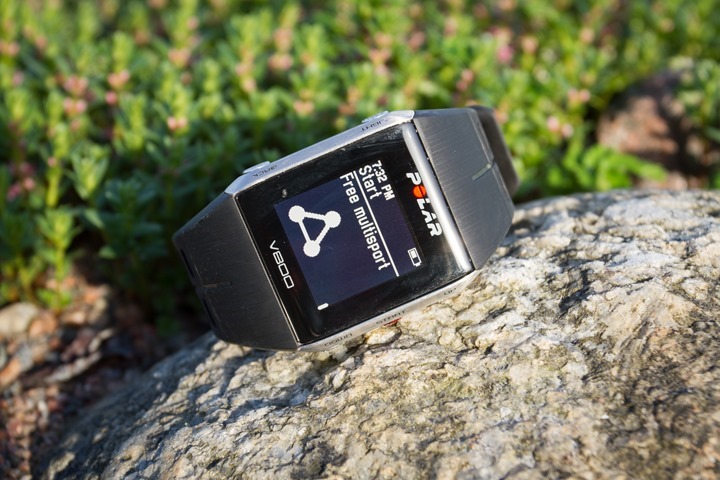
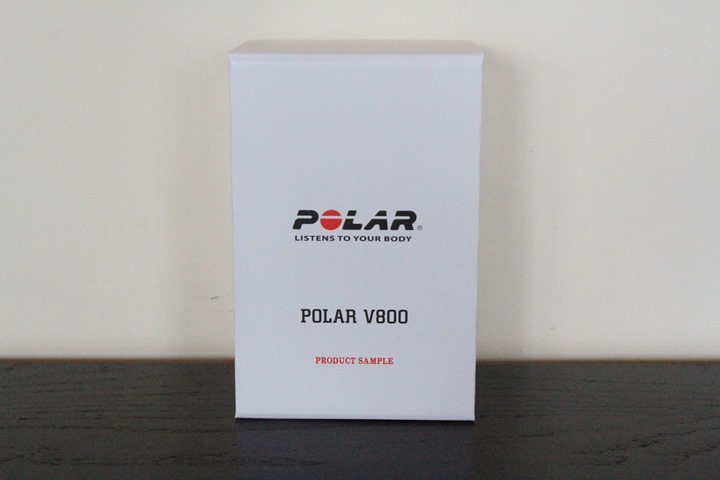
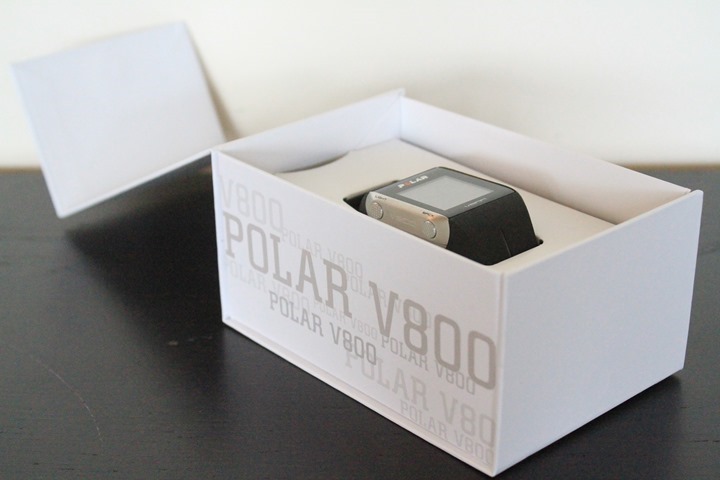
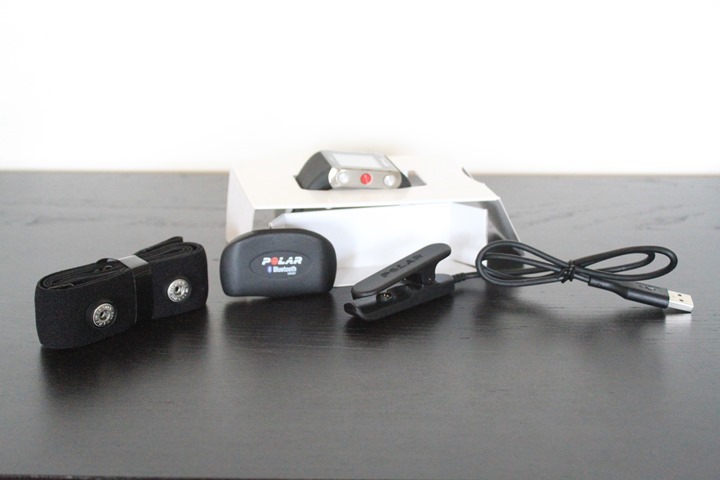
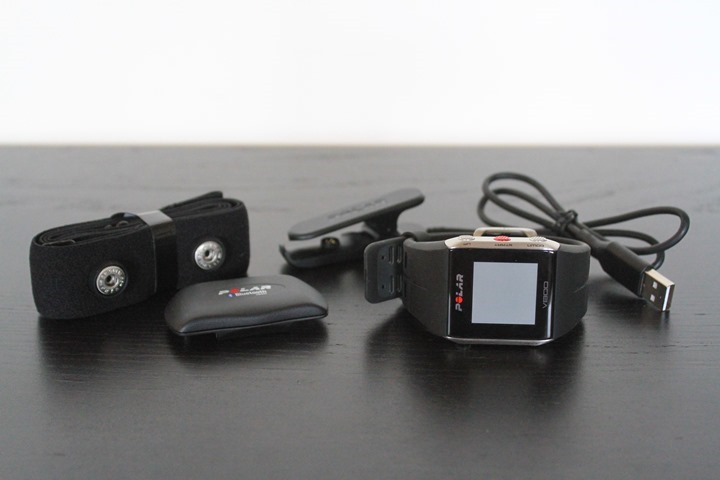
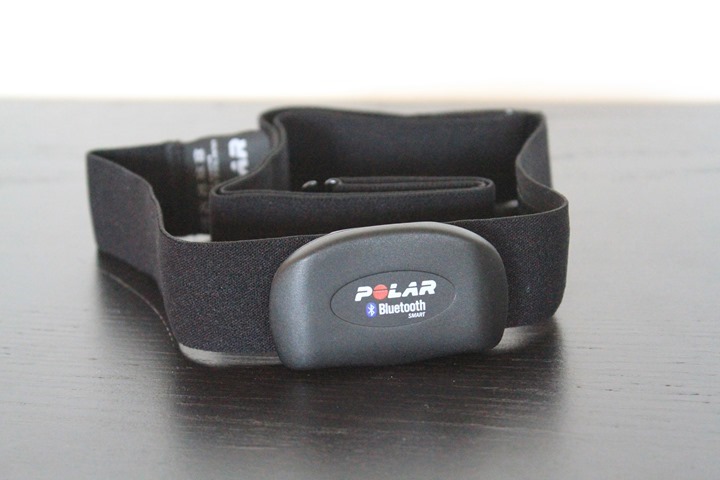
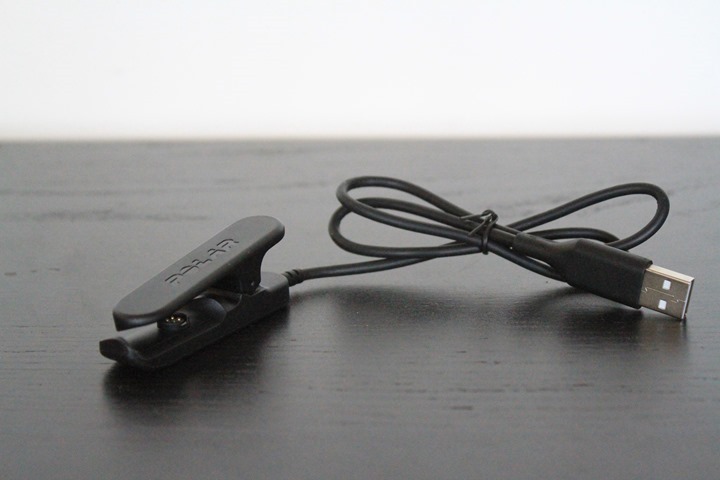
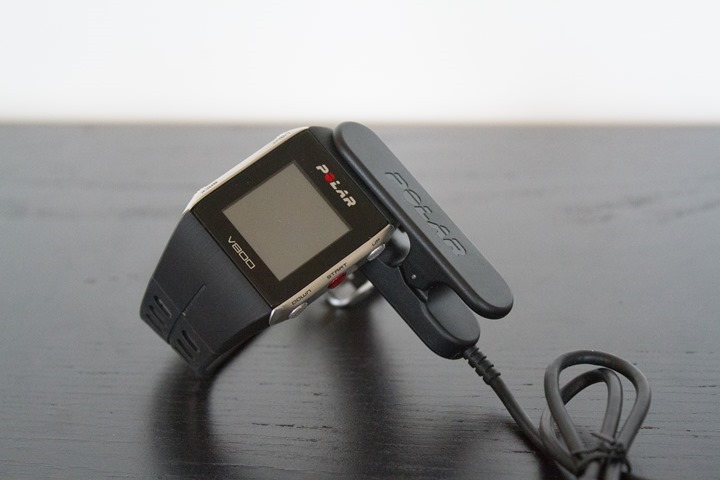
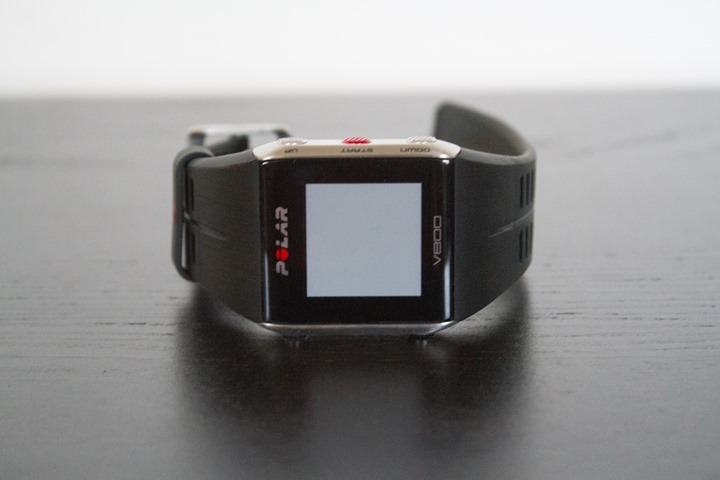
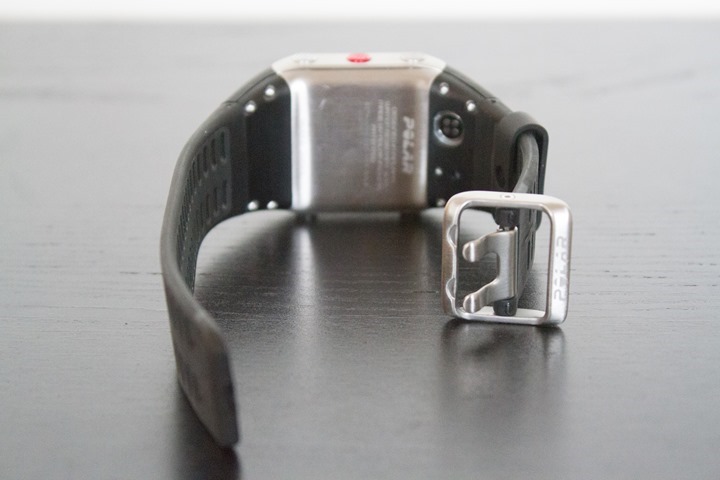

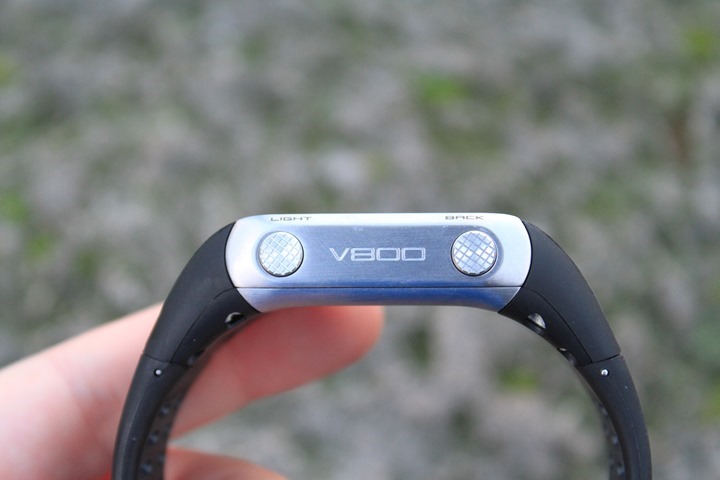
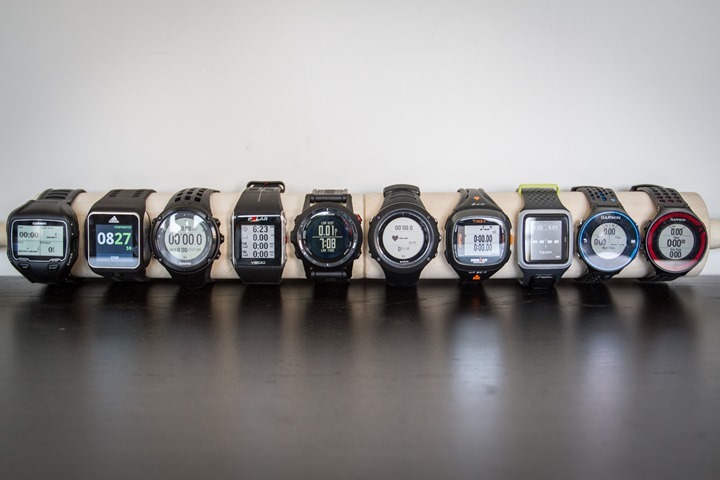
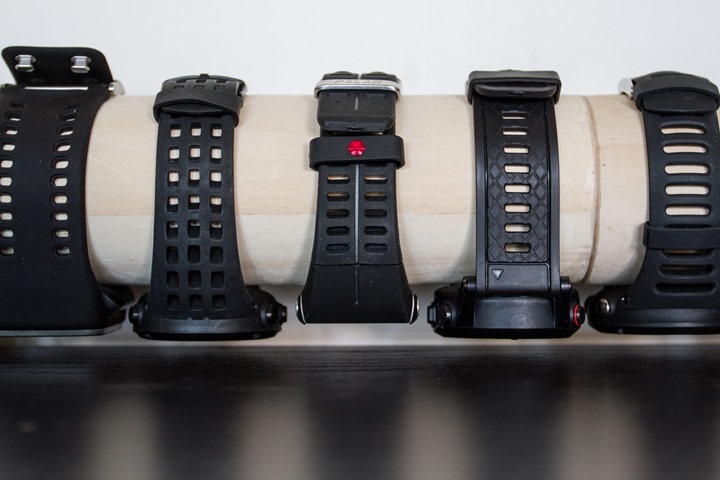
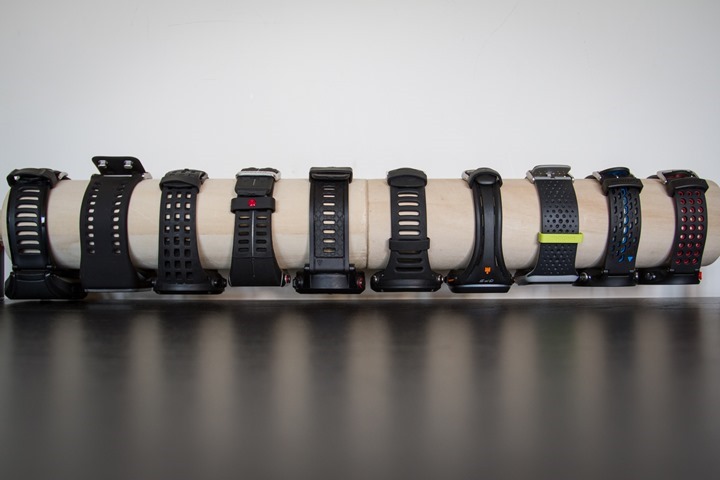
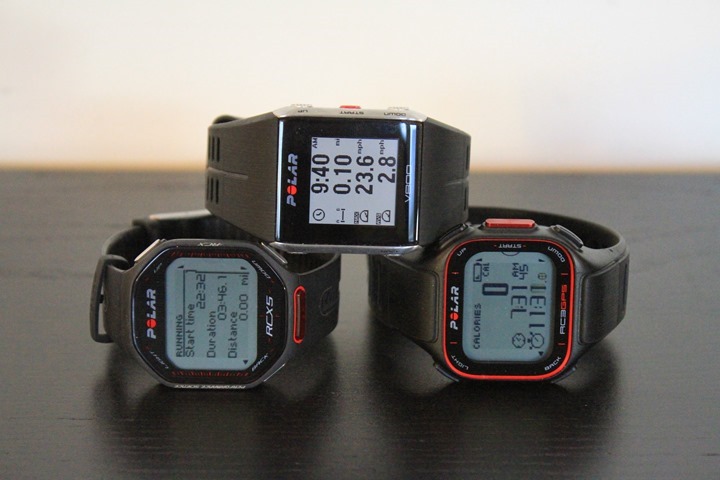
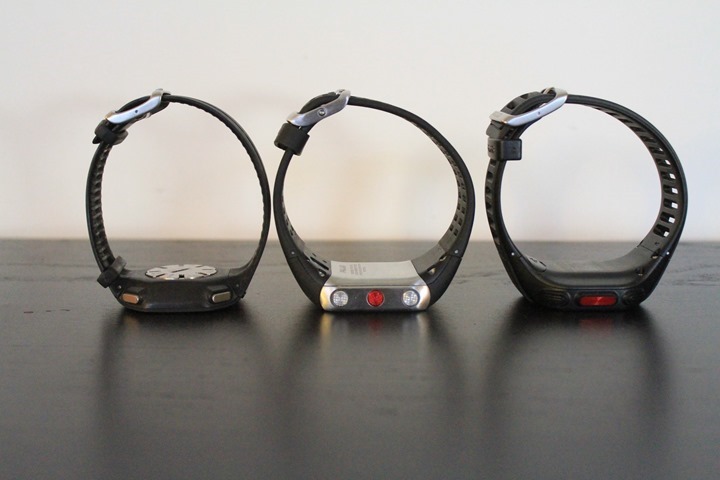
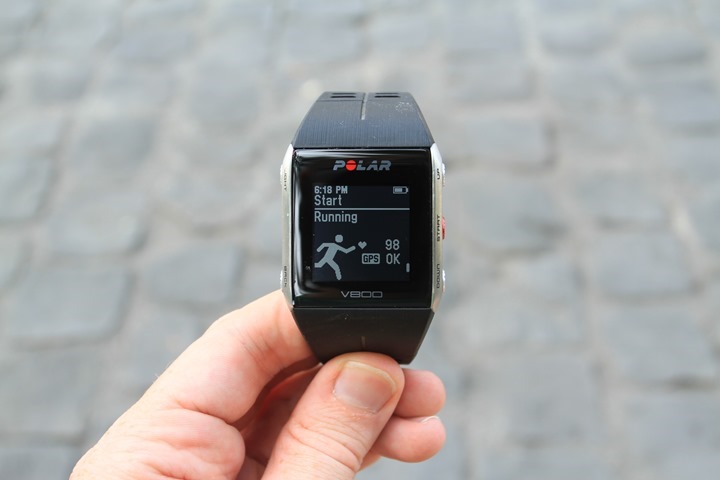
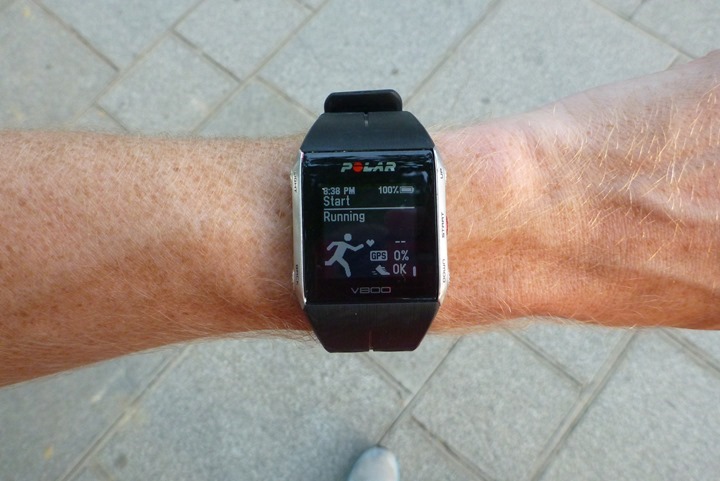
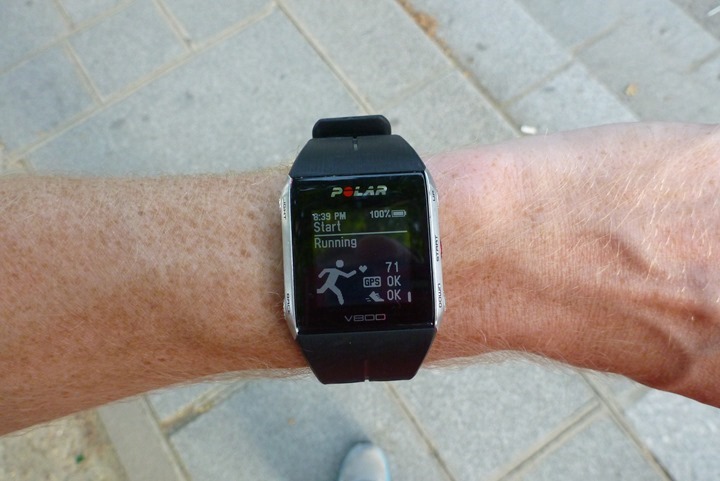
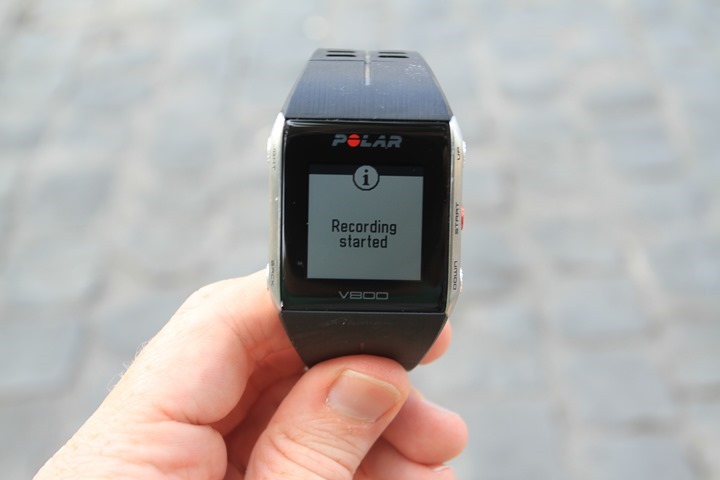
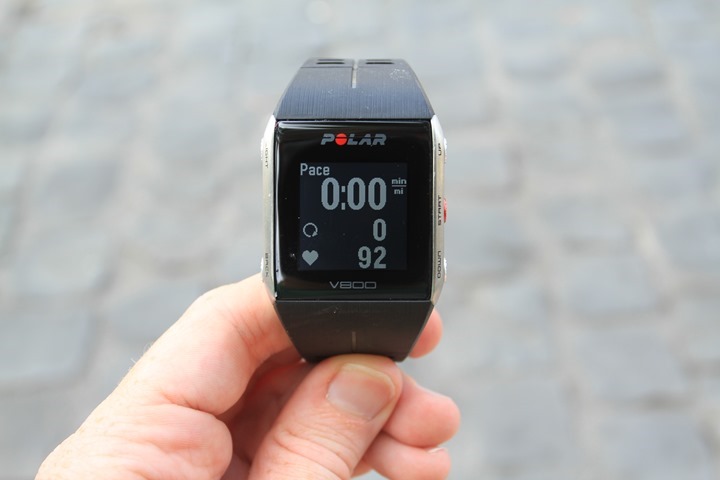
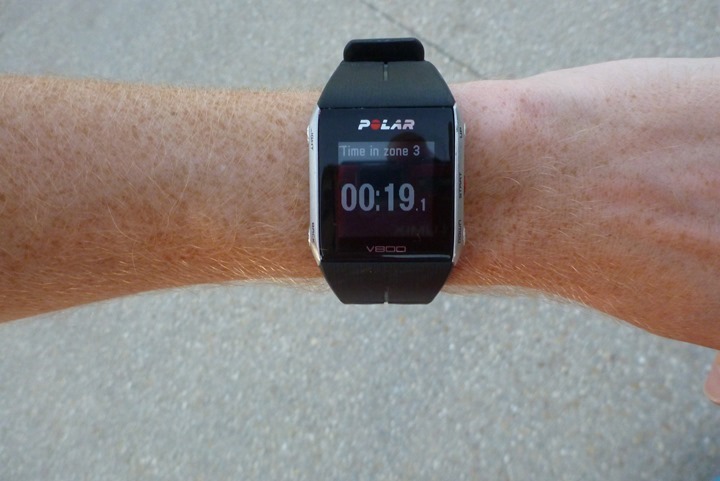
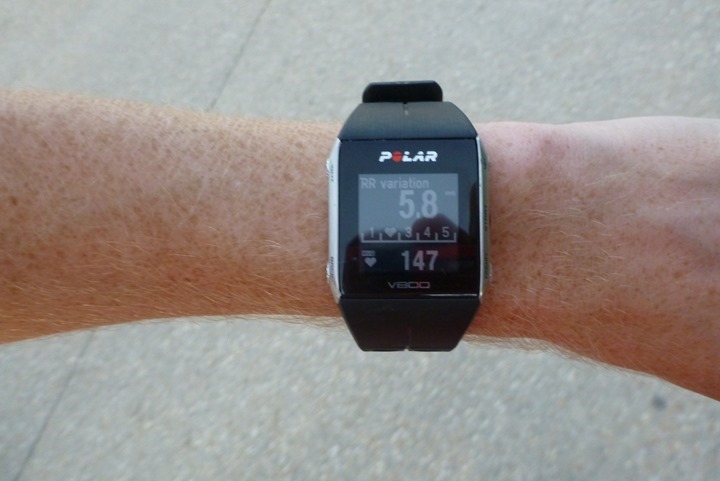
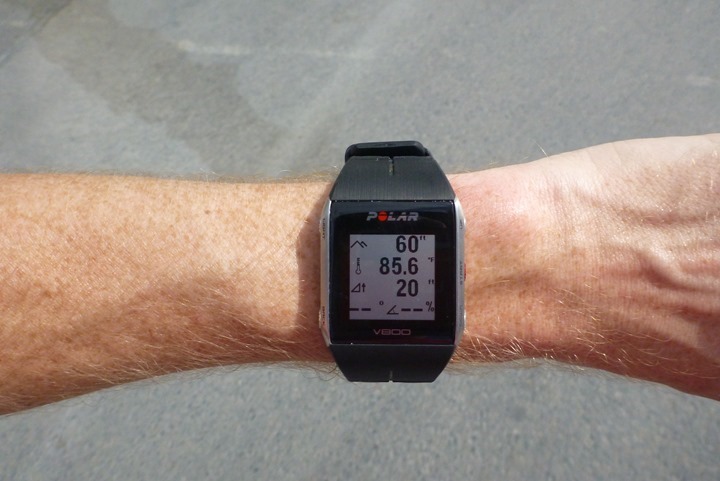
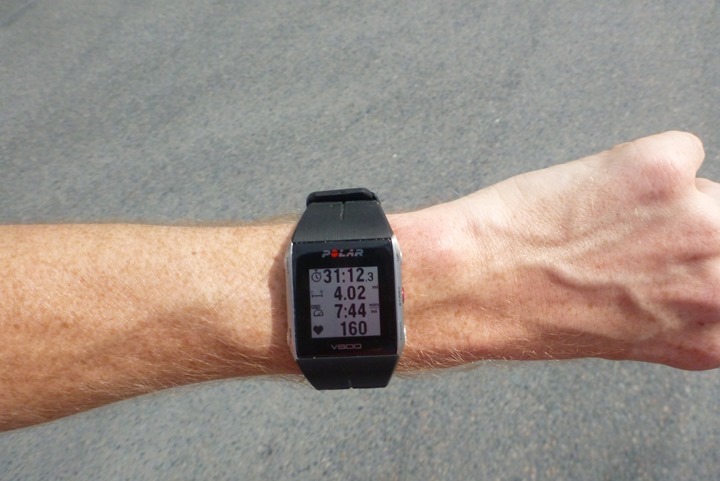
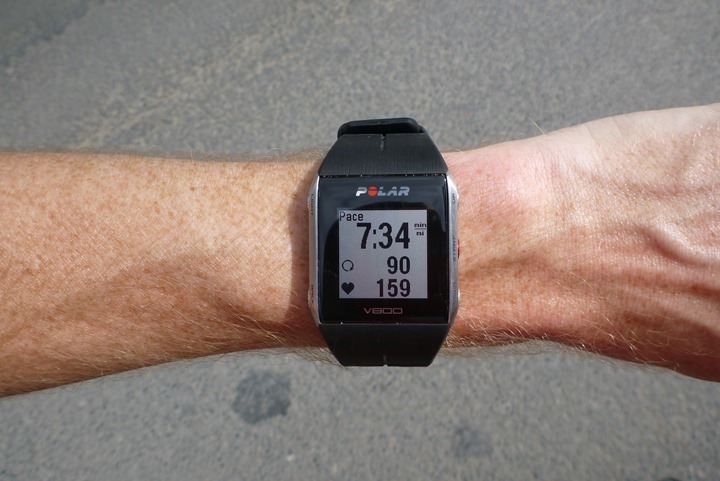
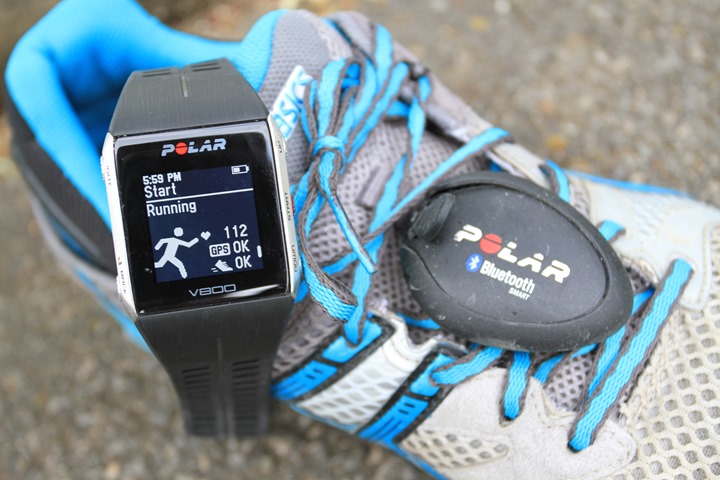


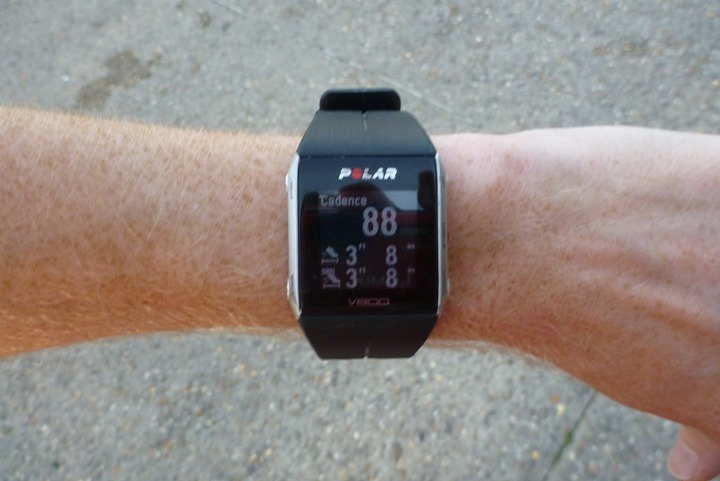


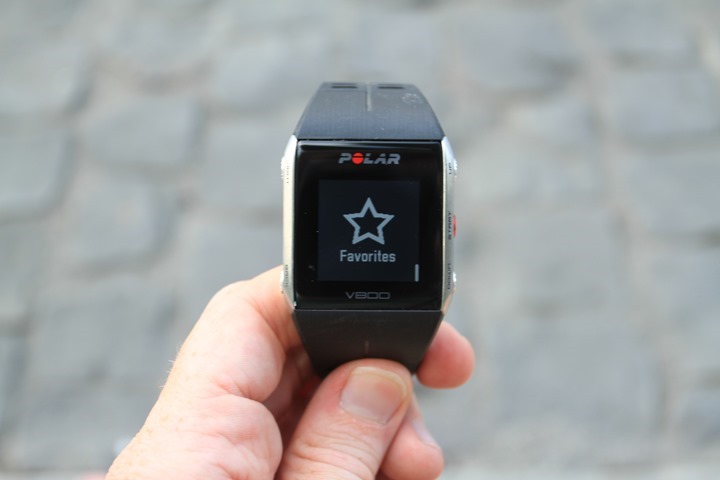
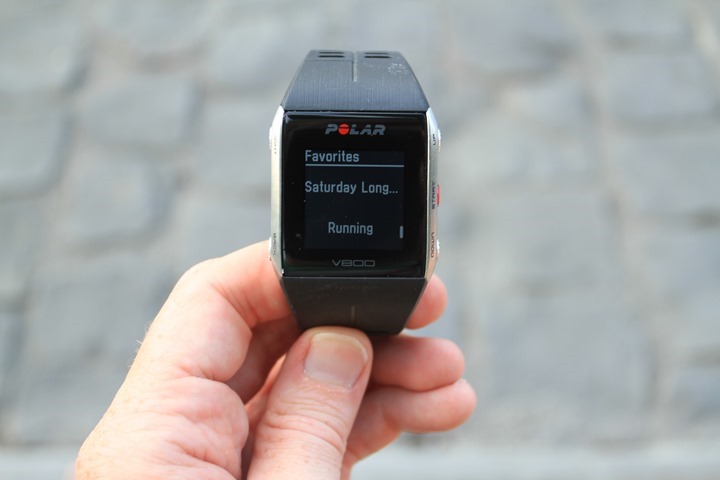
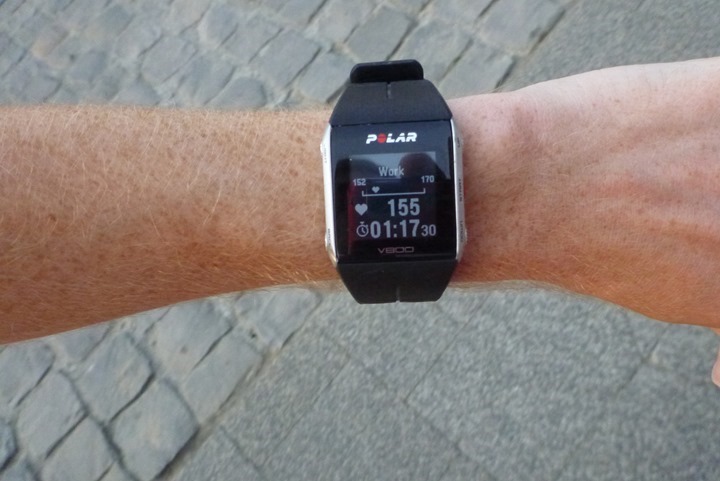
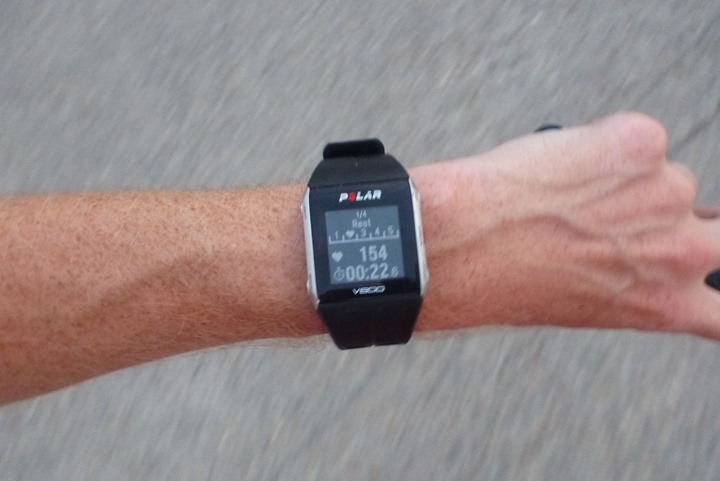

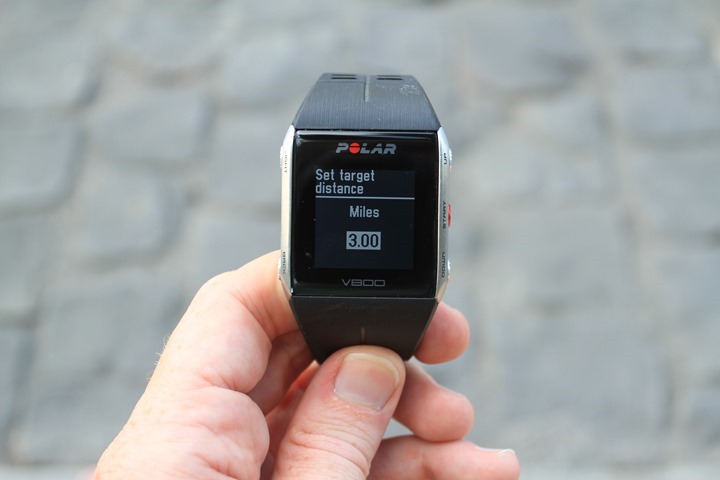
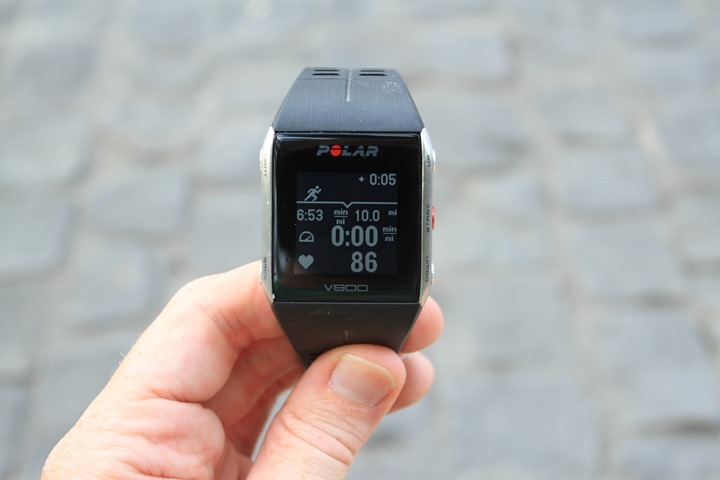

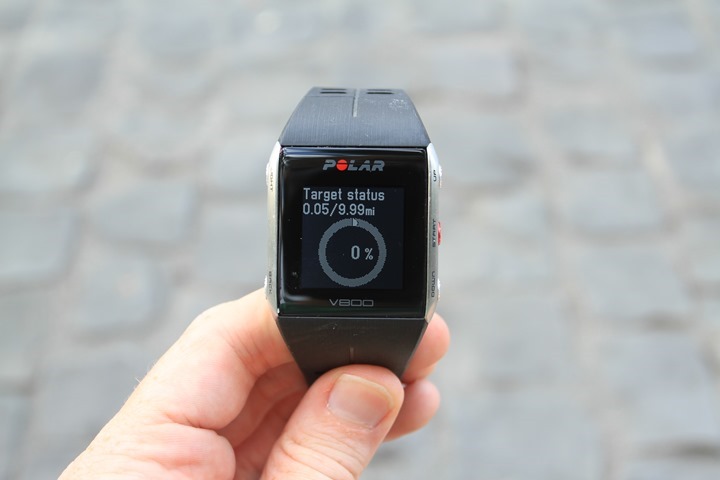

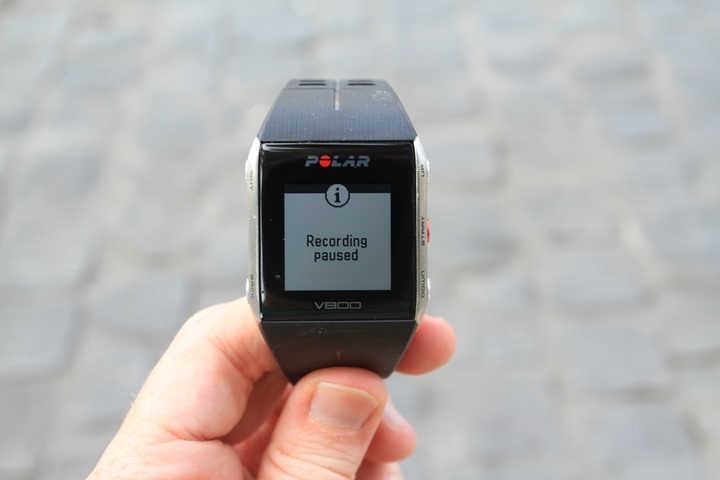
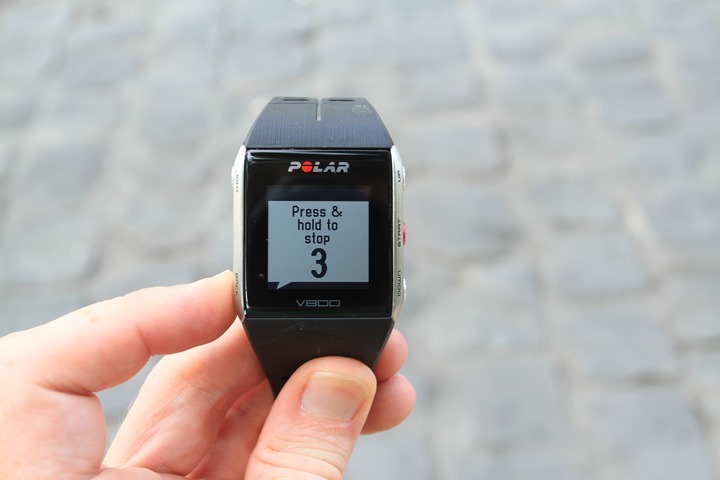
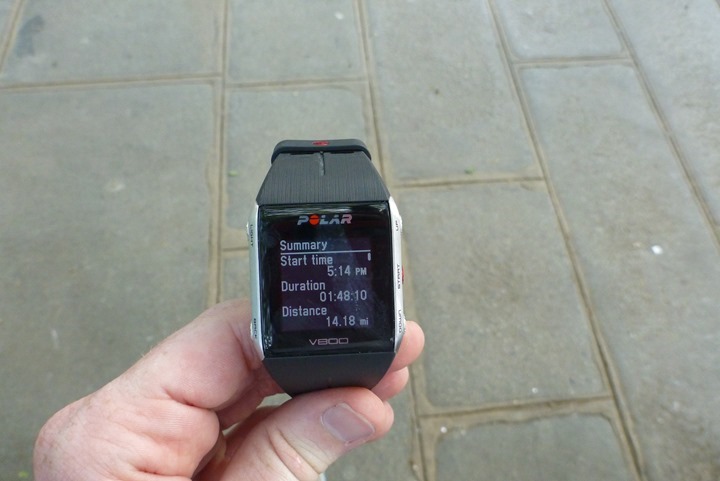
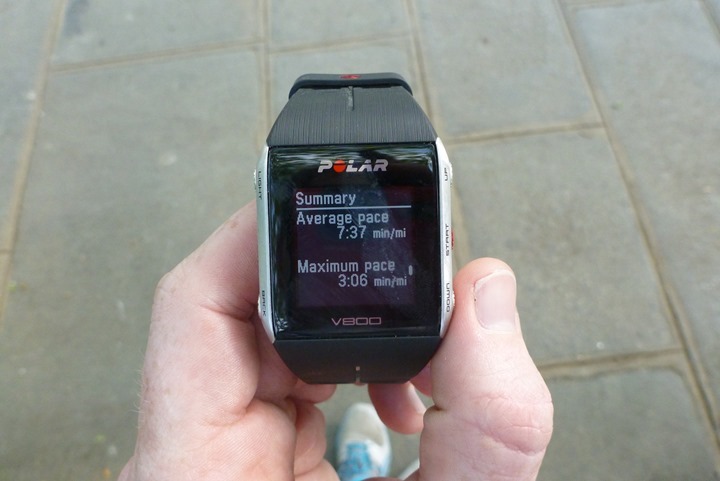
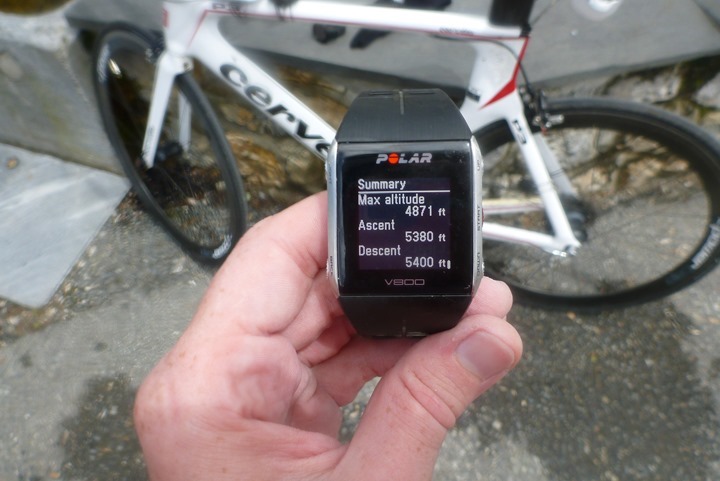
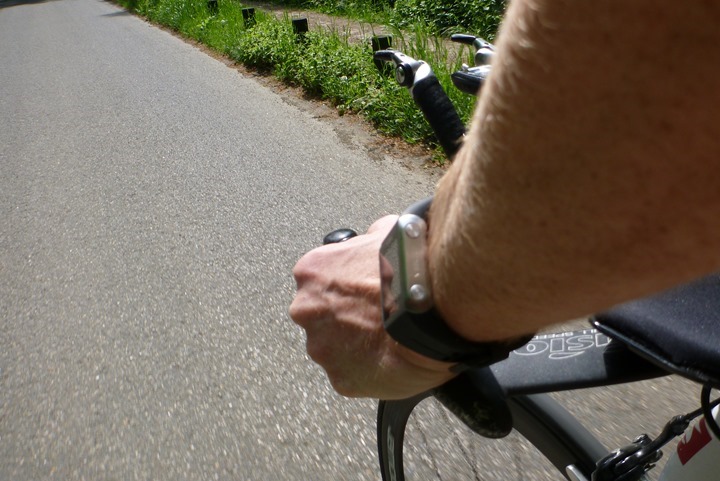
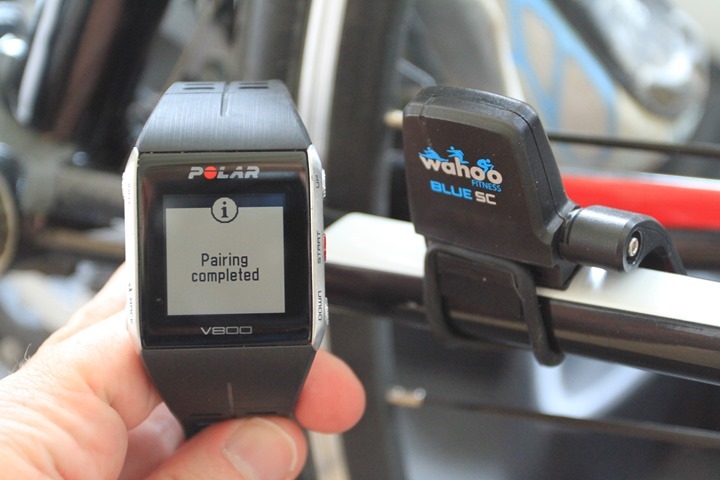



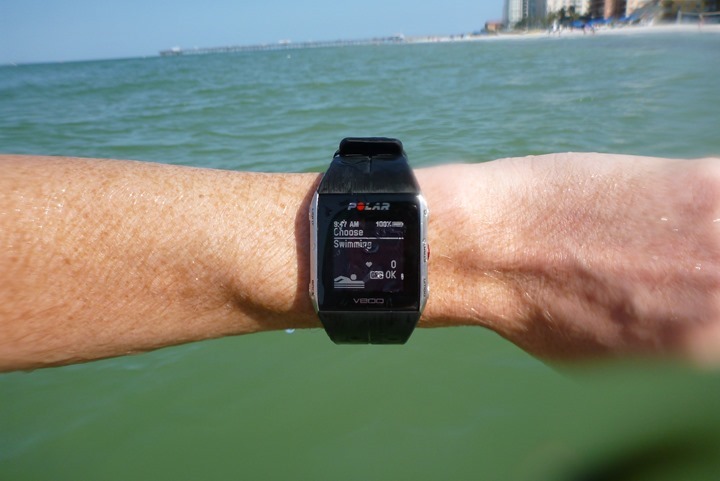
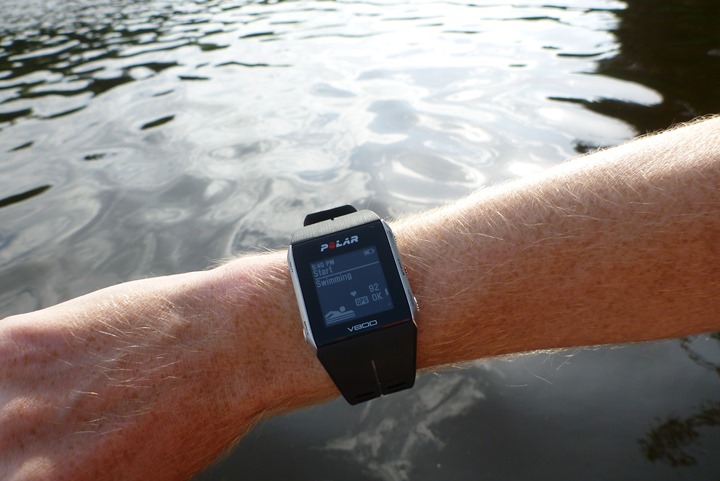


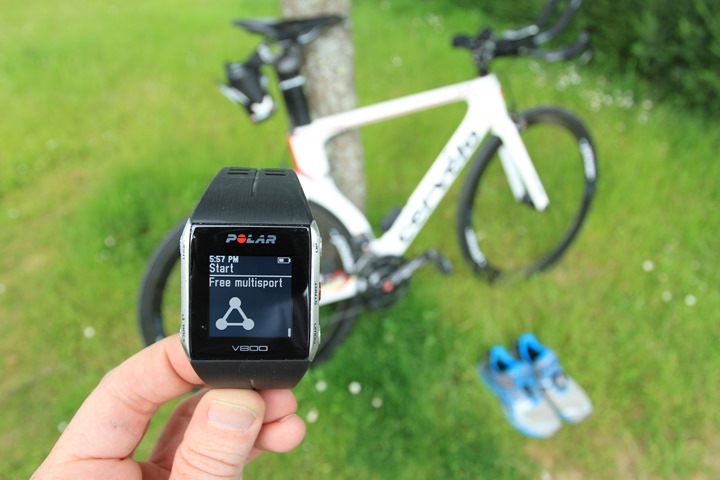

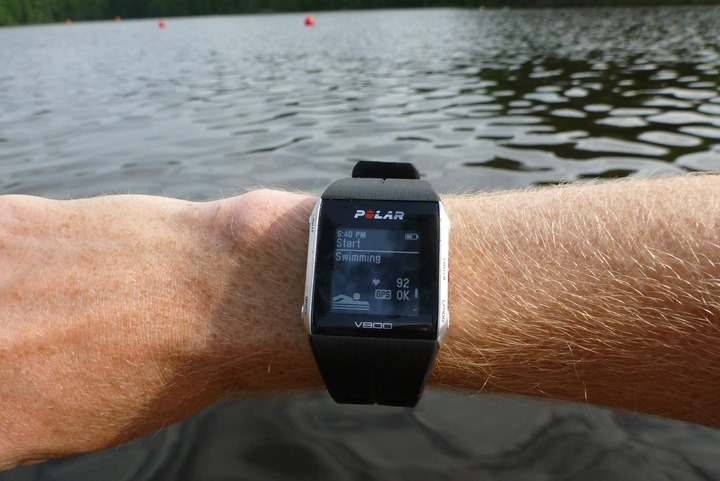
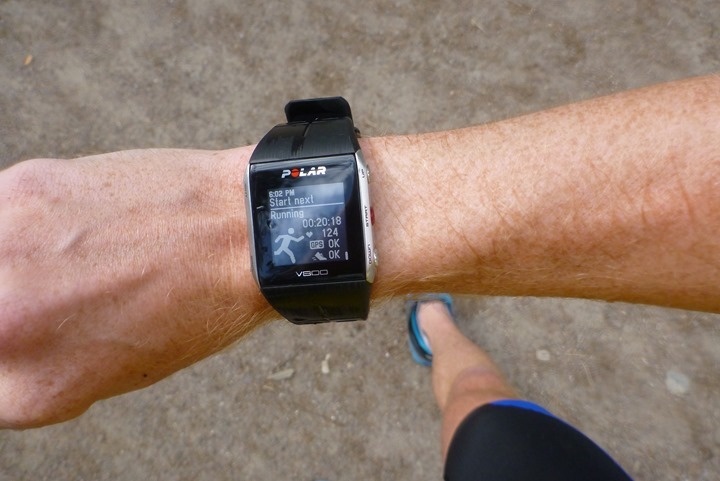
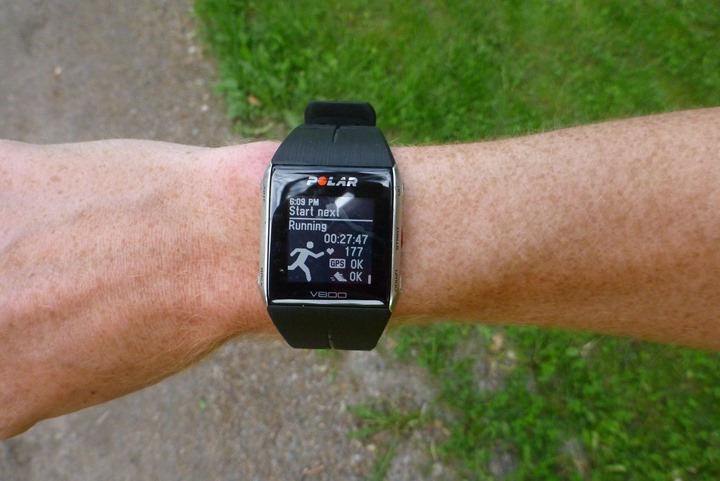
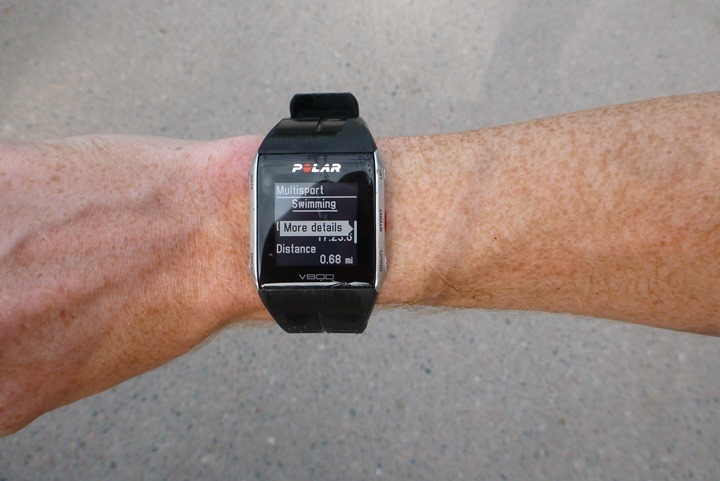





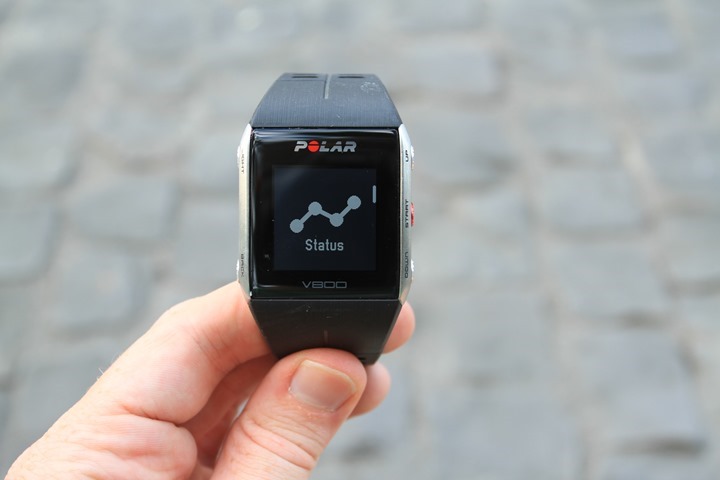
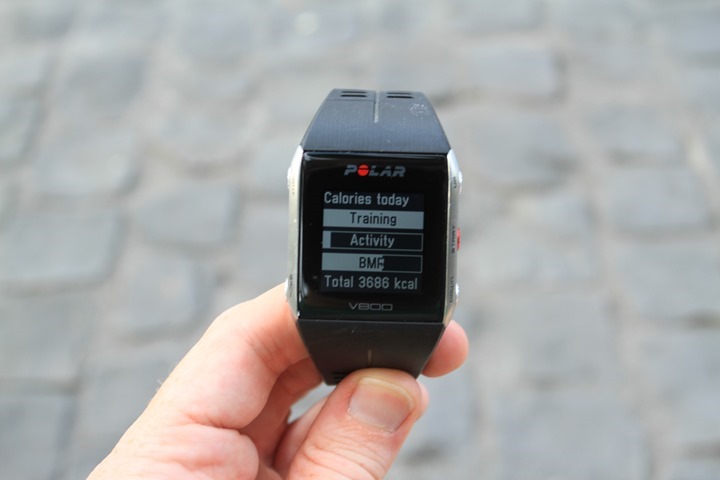
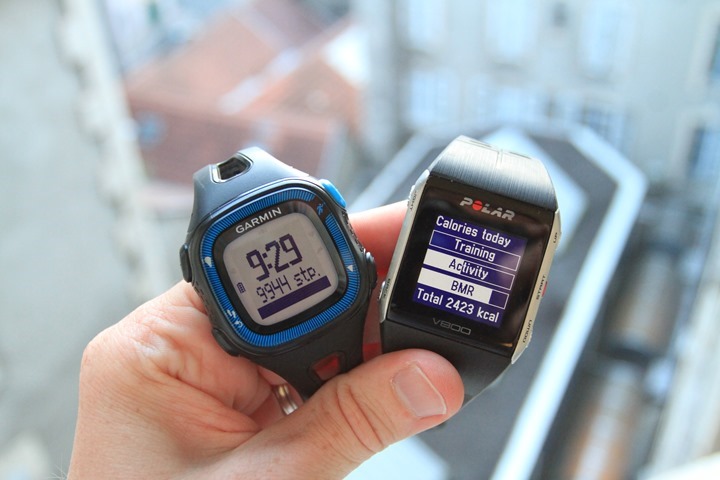
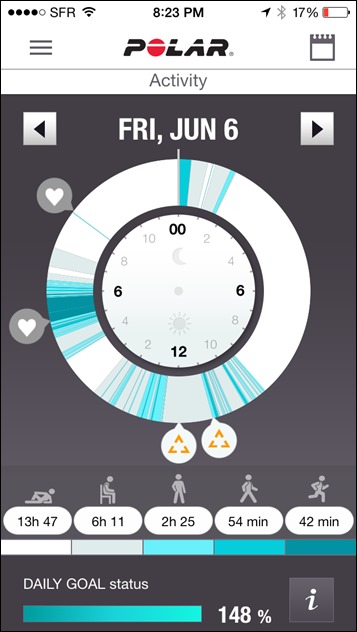
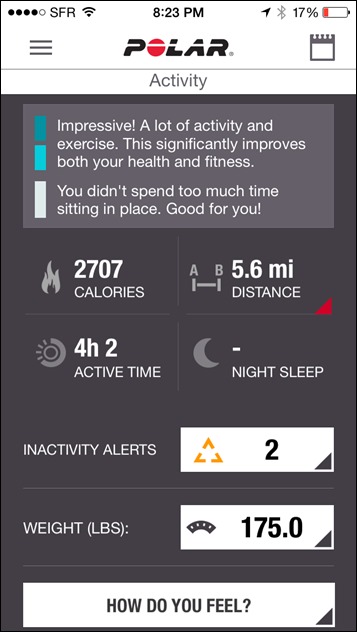
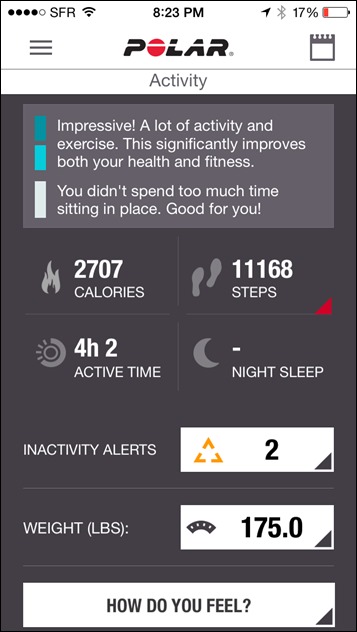
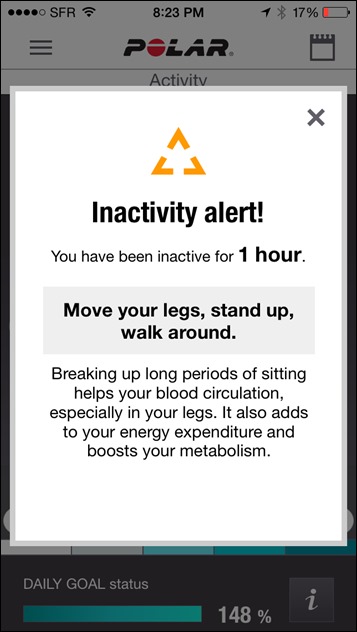

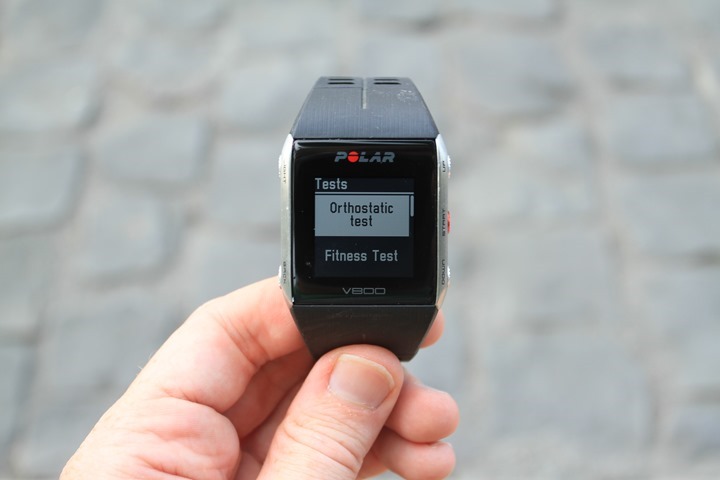
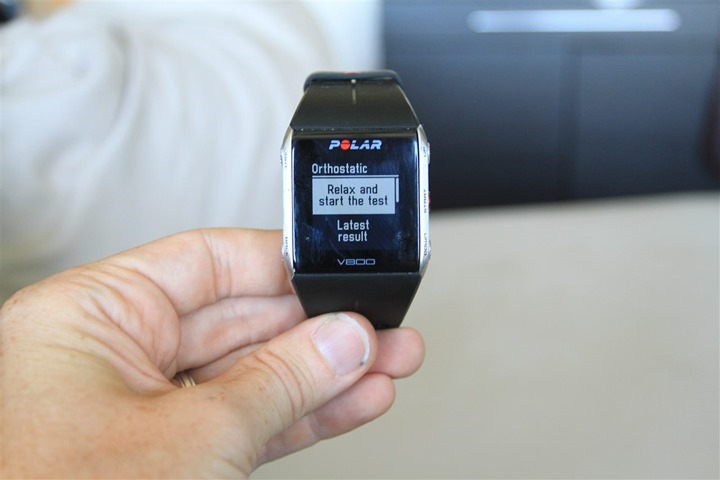
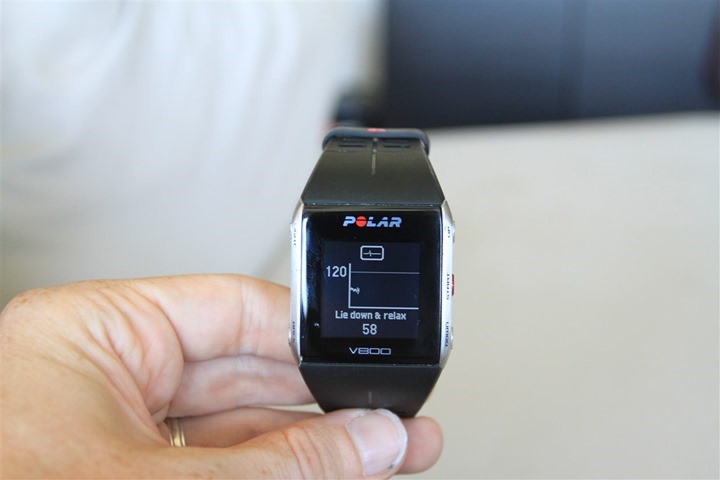

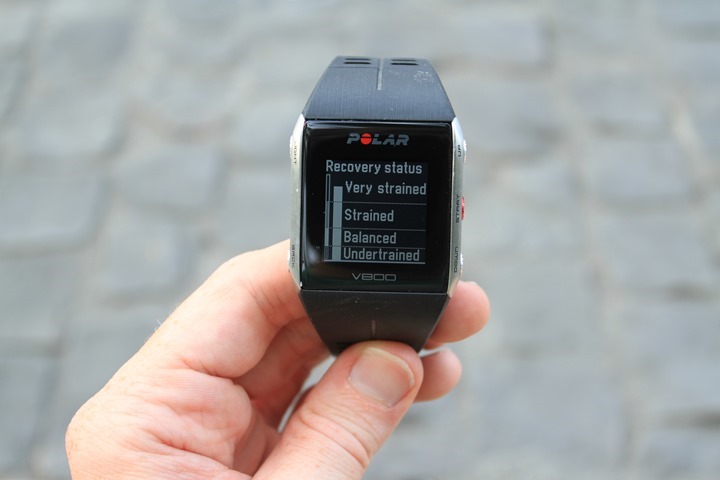

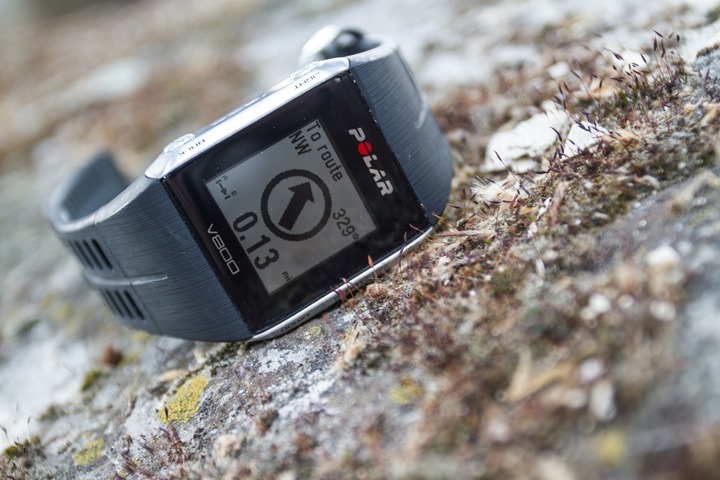
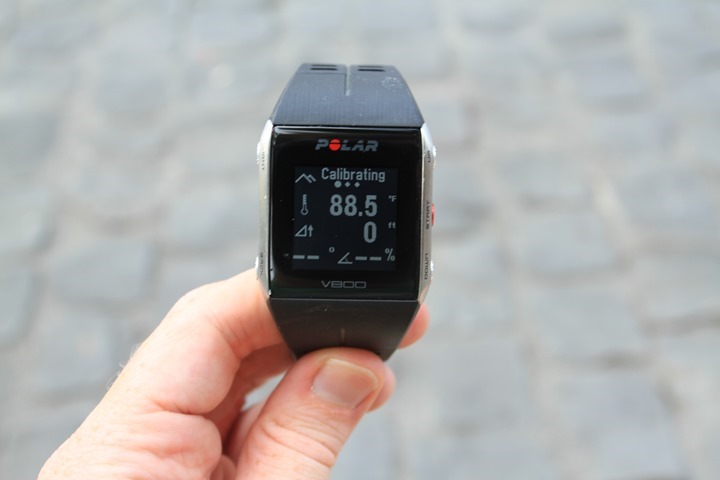
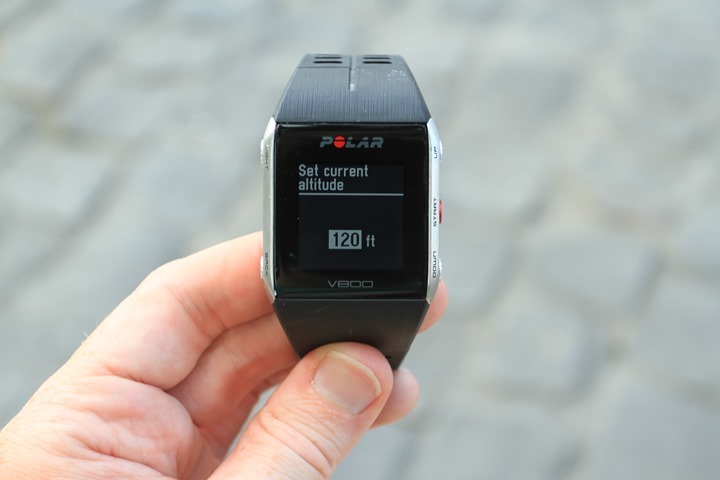
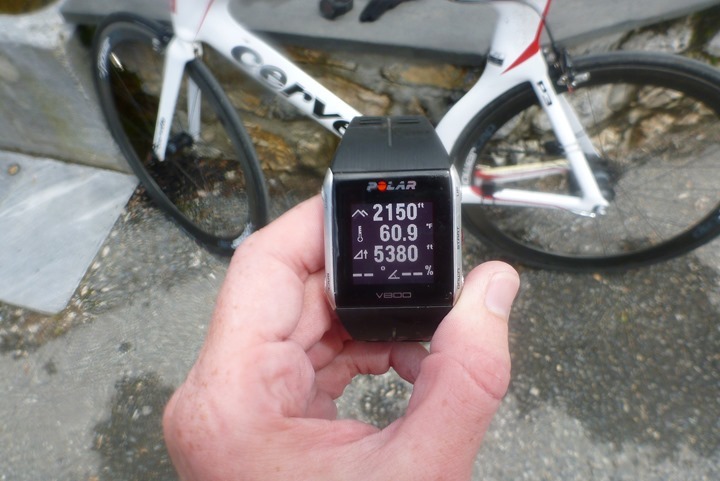
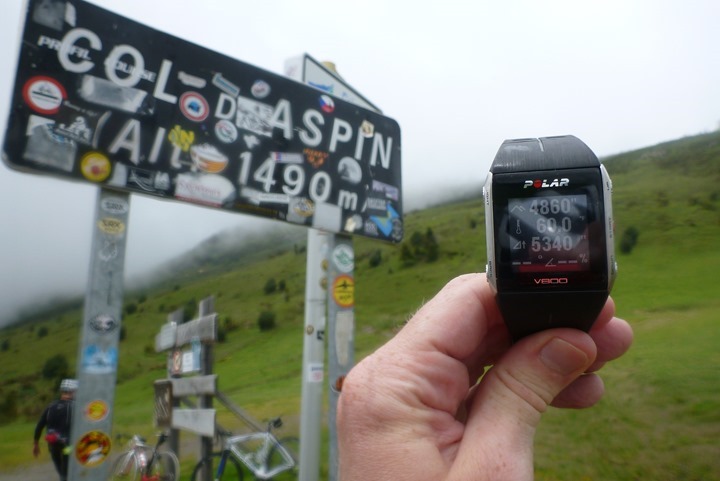
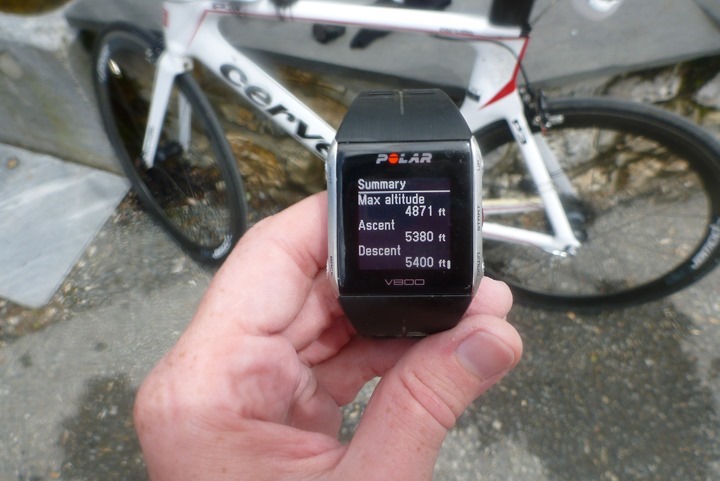
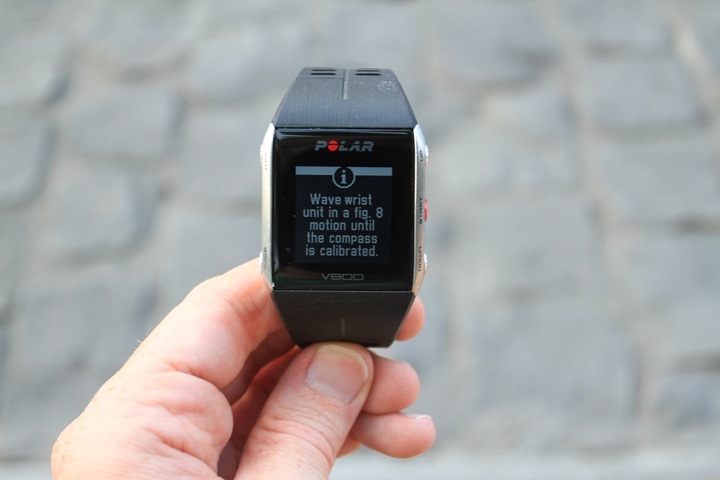

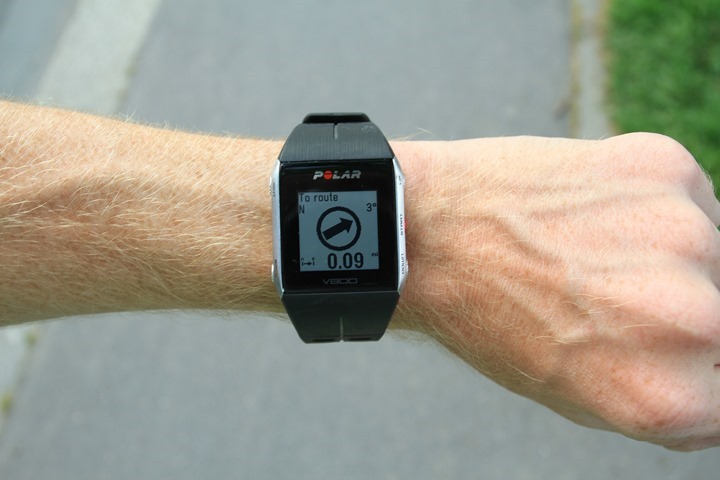
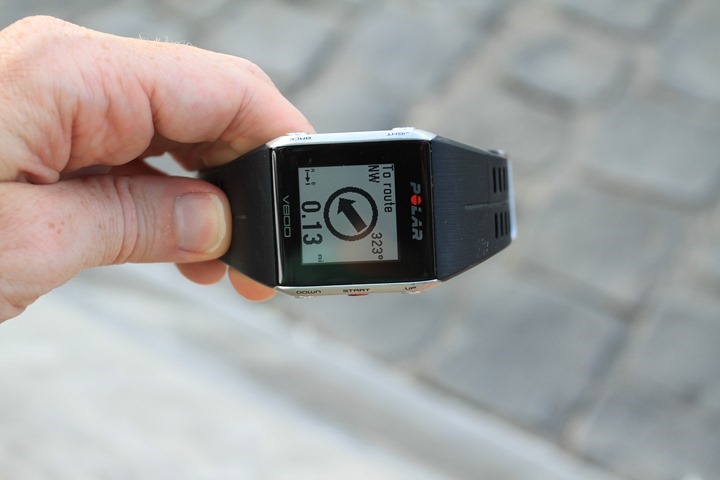
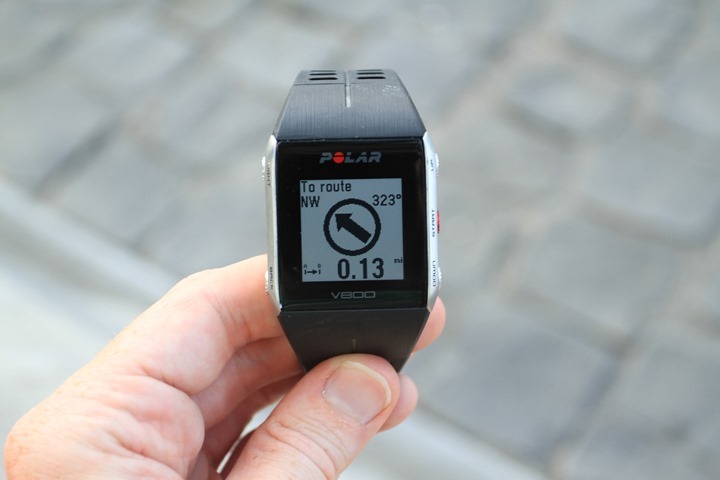
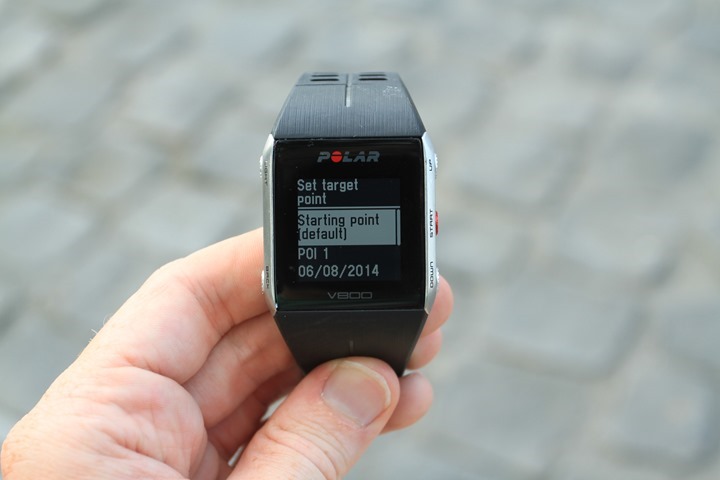
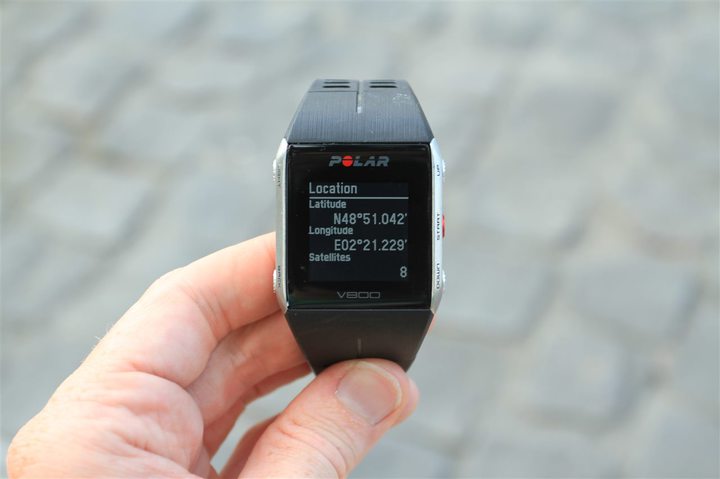
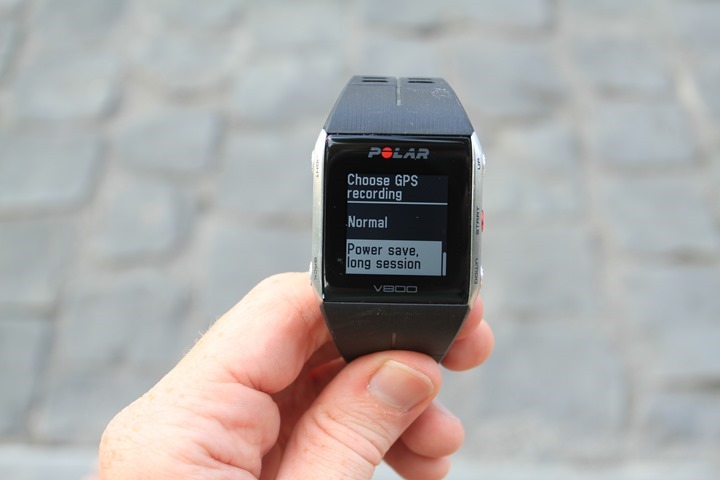
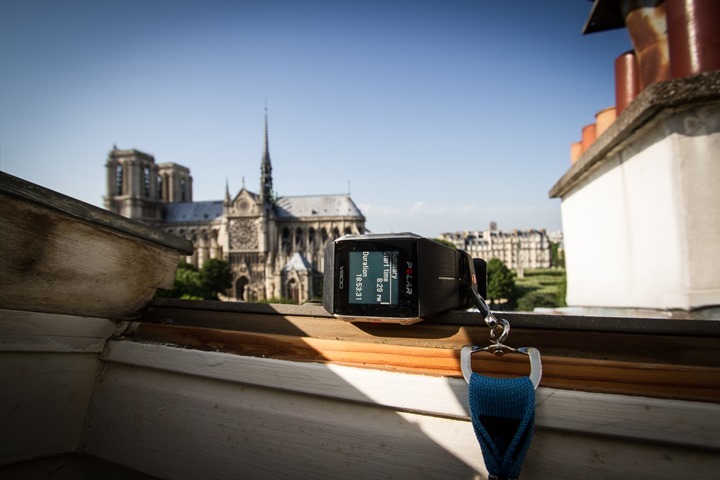
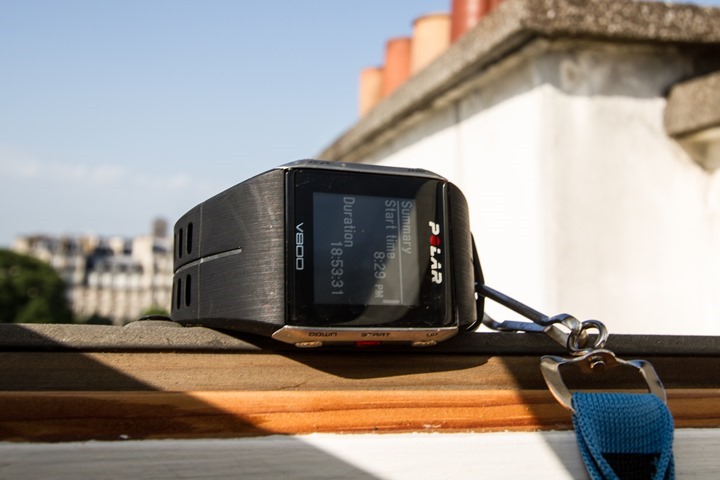
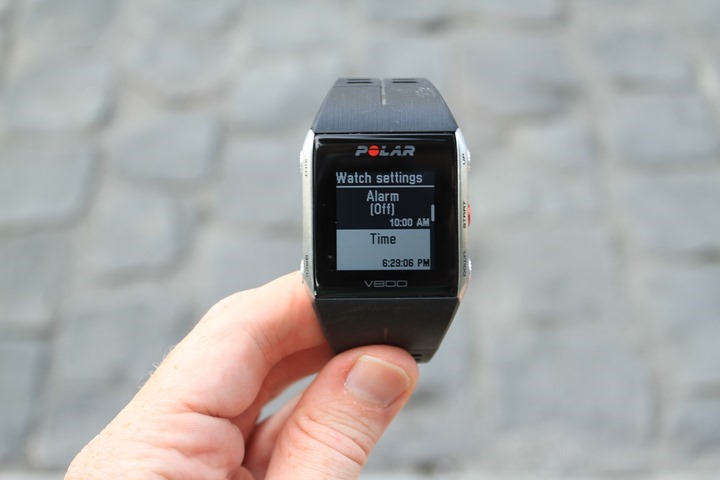
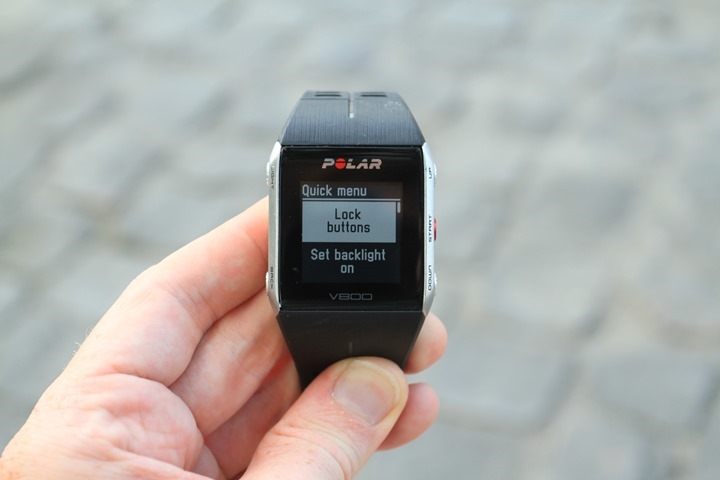

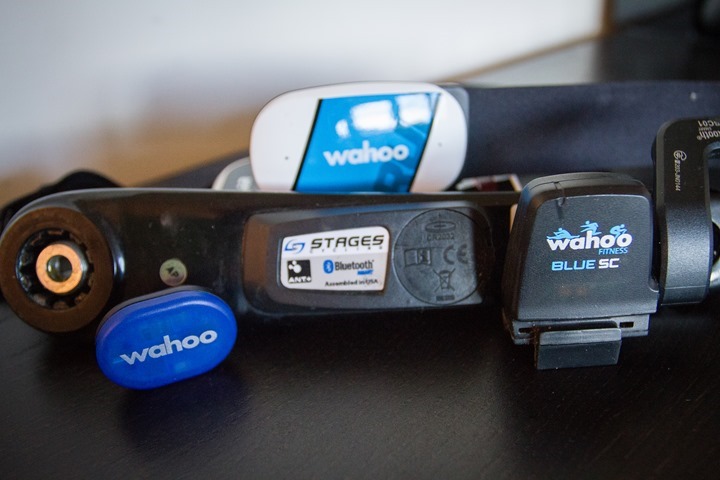
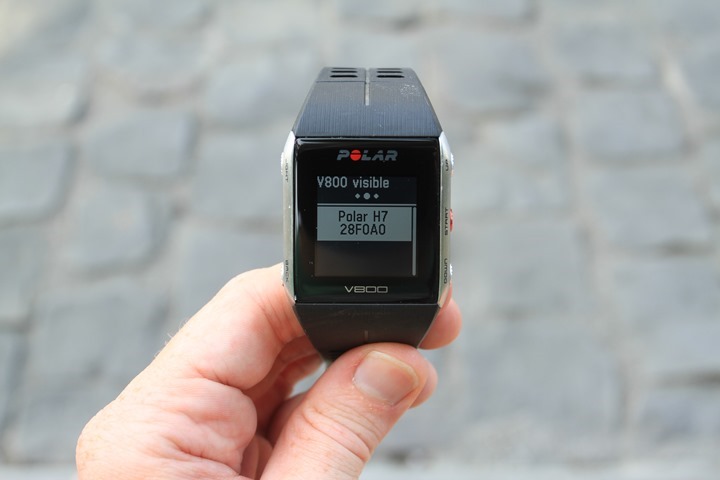
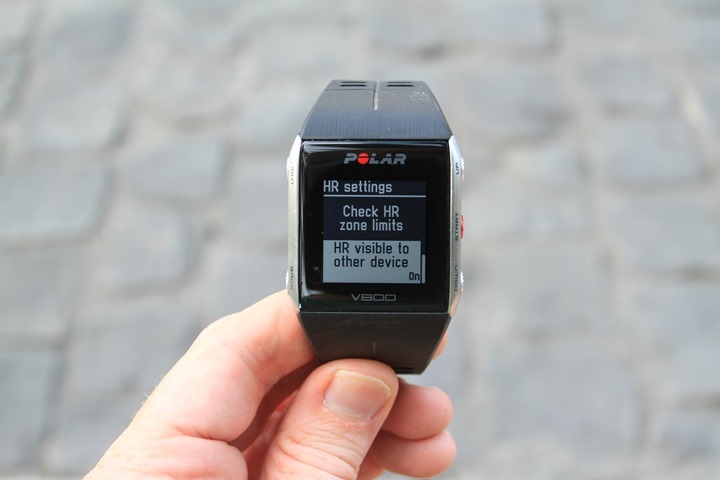
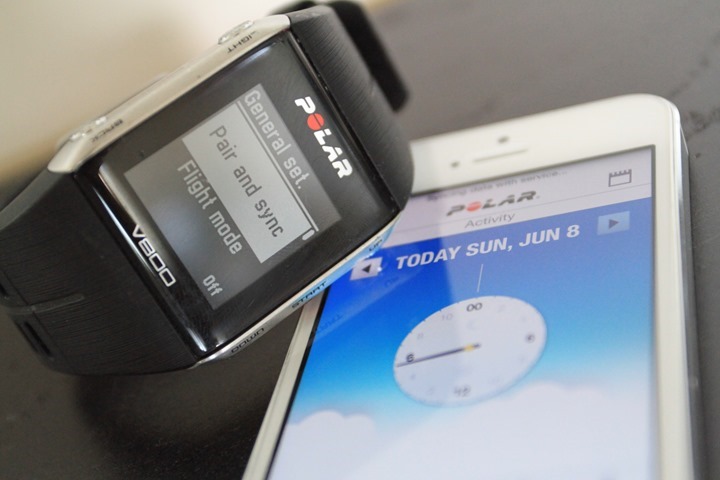

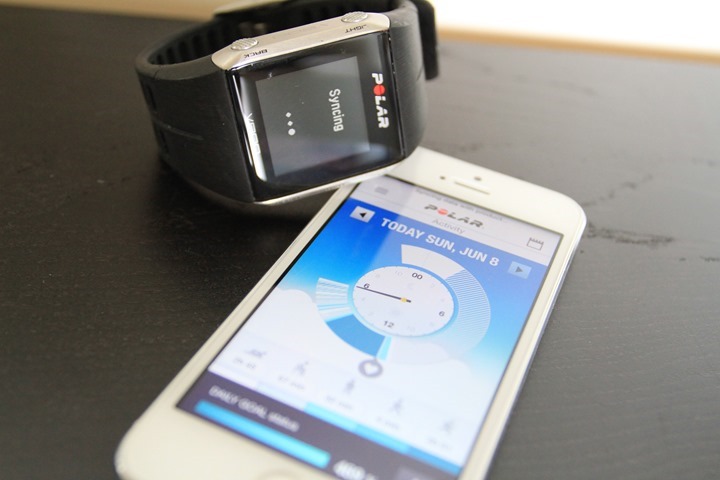
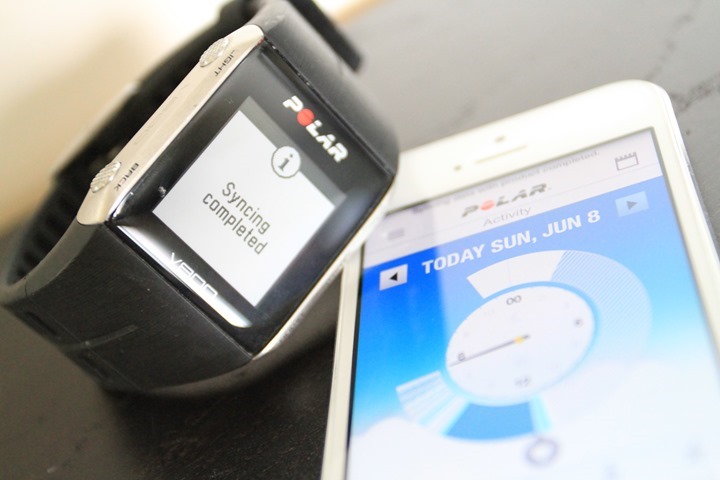
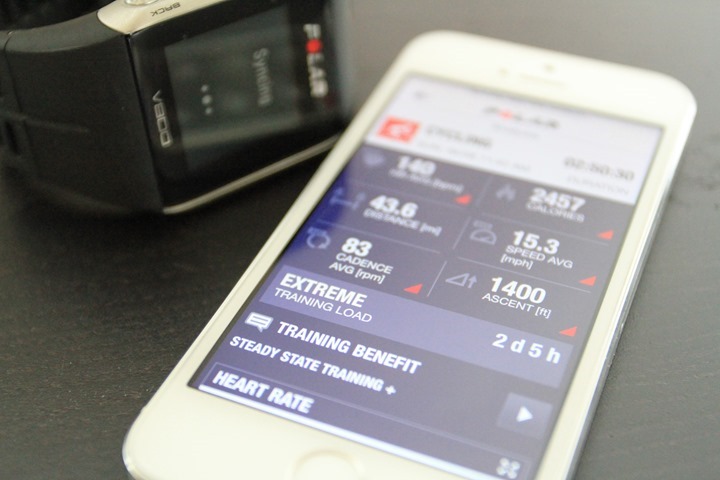
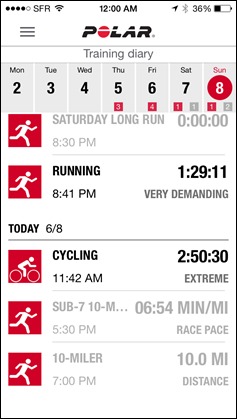
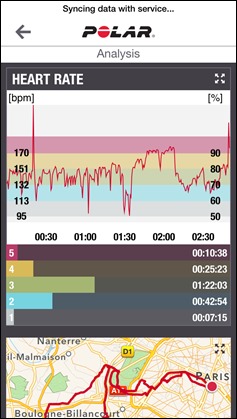
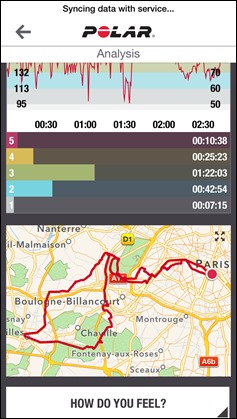

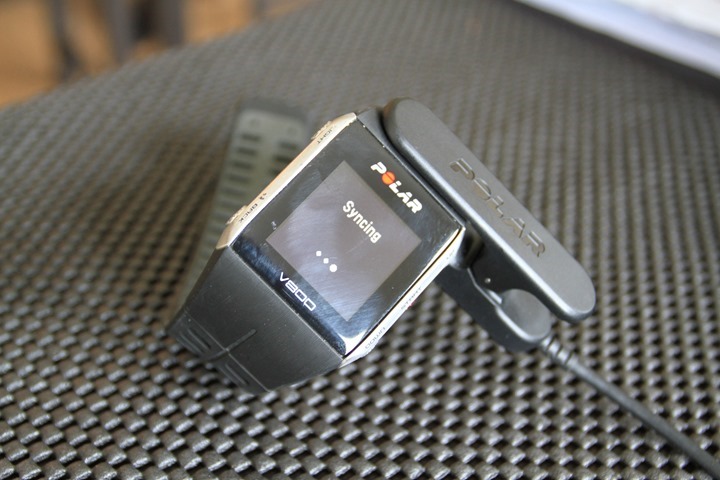






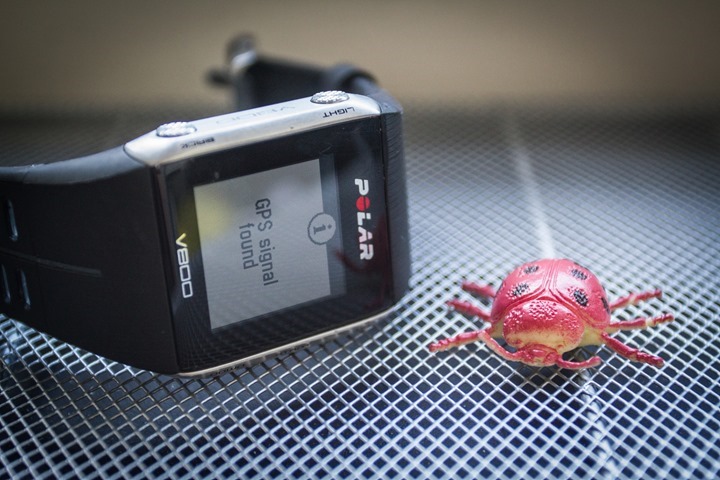
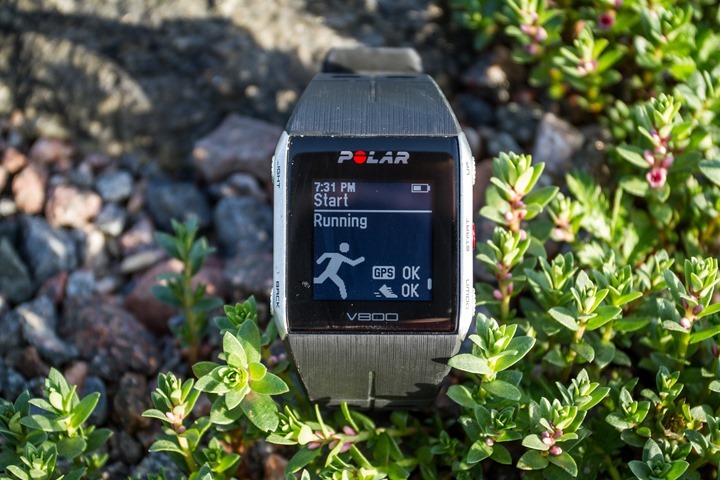
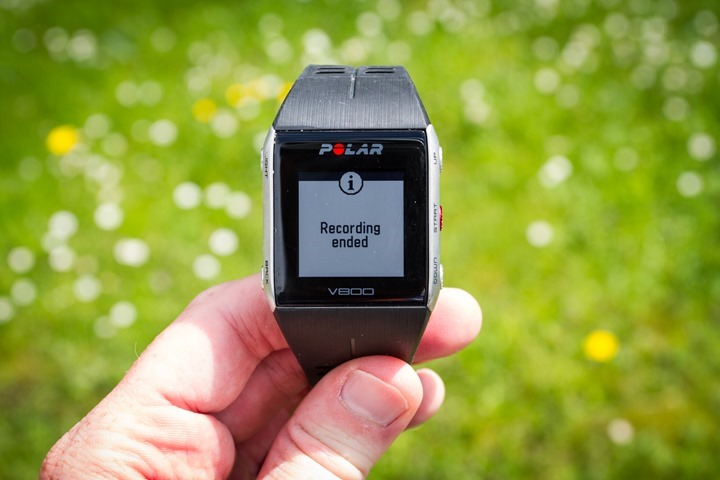
















In such forums, most people contribute when they have a problem
I would like to say that since 2 years I am perfectly happy with my V800 for multisport use. No problem at all, the GPS is the most precise of all sports watch according to reports, it is very readable in sunny conditions compared to garmin watches and the use of polar flow is quite easy, also e.g. for yearly graphics of monthly/weekly distance/elevation/running index aso. I miss mainly a global export function of all trainings in excel.
I’d agree in general to all of the points you made.
Only few hickups with syncing sometimes and smaller problems (rarely) after firmware upgrades where watch had lost all settings or due to some weired things the H7 wasn’t recognized properly. A bit of annoying is Polars way of disregarding customer requests for new features and Polars unability of communicating with the customer.
But the GPS is great and readability and usabilty is extraordinary, same for stability overall.
Agreed. After a warranty repair of my initial V800 (due to corrosion in the charging port), it has performed perfectly. Only issues were after one firmware update. Having said that I am looking to update to a watch with more bells and whistles. Seriously considering the fenix 5 (been following the garmin forums on stability, gps accuracy and barometer topics). Just recently heard that Polar will be making a big announcement on 4/6. So hanging tight for another day :)
I am really hoping for a revamped V800.
I love tech rumors! Where did you hear about the announcement on April 6?
Are we speculating?
What will they be telling us?
Where else can we read about this?
Thanks
Alan
Comming from an V800 and a Fenix 3, and recently exchanged my F3 to and F5, i World advice you to NOT to expekt ‘great’ GPS om the F5.
Its As good and As bad as the F3. The barometer is much better :-).
https://appelmoessite.wordpress.com
bummer! I will still wait until tomorrow just in case :)
Hi there,
is there a chance to sync back from strava to polar flow?
Thanks a lot.
Yes, for example with Android app SyncMyTrack even with the free version (just doesn’t store passwords).
I used it weekly.
And RunGap app for iPhone OIS
hi everyone , happy user of the v800 since more than a year now , the only thing i really miss and would make me consider buying another watch is the strava live segments feature . i understand it might have been discussed before but now that a new cycling gps computer has been teased (aka polar m460) , it seems like live segments are gonna be enabled on it ( i know it’s just rumors but some norvegian site already leaked the specs ) .
so my question is would it be a step in the right direction to get that feature on the v800 too ? i don’t really understand how strava deals with other companies to enable those features on their watches or computers , so if ray or someone who knows how that works can explain this to me it would be greatly appreciated !
ray i know you don’t comment on unannounced products so if you read this just consider the strava side of the question ;)
thx in advance really appreciate your site ! cheers
Two weeks ago I revealed that in Polar Flow web service the scaling of the Recovery plot changed (and some other details). Apparently it happened after the update of Polar Flow web service (March 14, 2017). Now after a hard training session the Recovery plot reports that I am balanced or undertrained. However before the similar training load resulted in a strained status. My old data were converted into less strained, e.g. previous Very strained status are depicted as a Strained one. I did not change settings in my profile. The behavior is the same in all web-browsers.
See the corresponding screenshots in:
link to drive.google.com
Has anybody else noticed these changes? I believe that the Recovery plot is a very useful feature of Polar Flow.
On April 4 I wrote to Polar support, but I received no answer.
Noticed that too.
It suddenly went down and it went back up way to high.
So, now I have the opposite effect.
I ± know what my recovery time was for a workout.
Or just walking with my dog (2 times a day). That gave me ± 1h max recovery. (90 a 120 kcal)
But suddently it was 4h. Same route and distance.
It’s not the right way to do it, but a gave a lower VO2 number in my settings to adjust my recovery time.
I also noticed a weird thing when I connect my V800 to a PC or Mac for sync or loading.
My watchface changed to date and hour, activity bar is gone. Not a big issue, but way?
I like the V800 a lot because for me, the recovery time was alway’s right icm with my RHR and general feeling.
The new H10 heart rate strap is a big improvement over the H8 in swimming. It’s not in the same level as the swim-hrm from garmin on flip turns but it has been staying on.
Stryd support with latest FW! This watch is so best value I have ever invested in :)
Ray,
Can you verify if you’re still getting HR to transmit out from the V800 to a V650? I can’t seem to get this to work.
Thanks!
I have been using my Polar V800 the last two years for Olympic/HIM races. This year I am doing a full IM. Through my training this year I have realized primarily on the bike that my battery drops significantly (1/2 battery) over the course of a 4 hour training ride with HR strap, Stages Power meter, and GPS connection. I am concerned my V800 won’t last the entire race with an expected finish between 11-12 hours. Has anyone experienced the V800 battery life running out during the long duration races? I’m also curious if the battery just doesn’t have the juice like when I first bought it and that is causing the quick battery loss.
Hi Matt, I finished a full IM (Frankfurt) this year with my 1 1/2 year old V800 in 12:40:01h. I had the GPS accuracy for the bike leg down to eco mode, and in the finish I had 8% battery left. So I guess with high accuracy GPS (and the power meter connected) there would have been no way to finish it in the battery life. I got a battery warning after 30km running in this IM. So better change GPS for cycling. I didn’t mind because the data were also on my Edge 520 ;-)
Try the GPS setting in long bike rides, there you can see best how much the battery is drained.
Niels,
Thanks for the information. I experimented with my V800 by putting it through the triathlon setting over the course of a 12 hour day with an actual ride included in the middle. Battery wasn’t going to make it with the high accuracy GPS, power meter, and HR monitor working the entire duration. Instead, I bought a Polar M460 bike computer for the bicycle leg of the triathlon and went into the Polar software and turned off the GPS for the V800 and turned it on high accuracy for the M460. I also unpaired the power meter on the V800 and paired to the M460 instead. I left the HR monitor working on both the V800 and M460. The V800 battery life makes it the whole duration and the M460 provides additional metrics which is helpful for training. Thanks again for taking the time to respond.
Hello there!
Could you pls recommend a watch/solution (at a lower price point – say under $350) so that I would be able to do the following:
1. monitor LIVE heart rate while swimming (should be able to see the heart
rate while in the pool by glancing at watch during strokes)
2. get vibration alerts while swimming if I go outside a defined heart rate
zone.
3. Measure calorie expenditure while lifting weights and doing HIIT in the
gym
thanks very much.
Hello everybody
My V800 is broken (problem of waterproofing after 2 years and 3 months) and Polar offers a new one for 190 € with 6 months warranty. But I can also buy a 920 xt HRM3 for 255 € with 2 year warranty.
What is the best choice ?
I’ve been thinking about it for a week but I’m going around in circles. I do triathlon and use a cadence / speed sensor on my bike.
Thanks
The V800 is still probably the single best “triathlon/multisport” tracking watch specifically for those events, and the ONLY choice if you want to see “in the water” heart rate readouts (also GymLink for lots of gym workout equipment that still supports it natively which you don’t get with most of the competition).
But as an overall product, those are really the only current feature that are unique to it. It’s still a very nice watch, and Polar’s HRM accuracy (and on that watch, their GPS accuracy as well) is 2nd to none.
But “features” it’s lagging, if you want a “smartwatch that is a good sports tracker” it’s lagging severely (even to it’s other models, if you want all the bells and whistles except those above, the competition have more at this point. Rumor mill is heating up that maybe a replacement is coming soon, but it’s all speculative, nothing I’ve seen points to anyone even seeing a “closed-door-glimpse/memo/whisper” out of Polar at this time.
So if the best GPS and HRM accuracy, and in-water swim HRM readout, aren’t your #1/2/3 critical features, then (as a currently very happy V800 user here), I’d at least consider alternatives. If you aren’t worried that your GPS varies by an extra 100ft per mile, and if you never use the near-ECG quality HR tests and statistics and just want “BPM” at a point in time, and the in-water swim/Gymlink abilities aren’t important (or never used) then the “rest” of the field offer more.
That price is really good though, for a rock-solid multisport tracker that nothing else touches within that special niche at anywhere close to the price.
I think ChrisTexan hit on most key takeaways about v800. I’ll add that Polar’s much longer history in the wearable sportswatch and heart-rate monitoring compared to most of today’s brands gives them an advantage in core device applications. Setting aside some of the very cool downloadable apps that v800 users can’t get, Polar is good at having the important stuff front and center, without fun but often pointless and cumbersome distractions.
Adding to the GPS accuracy, heart rate under water, and other things Chris mentioned, the v800 and companion Flow website have:
– useful, straightforward, science-based incorporation of apps, features, and knowledge bases on heart rate, pacing, race prediction, recovery, 24-hr activity-tracking, multi-sport, etc.
– for anyone doing long distance/long time activities, battery life is excellent. It has adjustable GPS tracking frequency to balance accuracy with battery life, an a monochromatic screen to avoid color-screen drain.
– multi-sport ecosystem is very complete, with a full line of accessories to support training and competition individually or in groups for running, biking, swimming, and a whole range of other activities. It has data connectivity with Strava, Runkeeper, and a good handful of other commonly used apps and social media.
It’s not for everyone, but it’s a very solid choice and a good looking piece. They are due for an upgrade as this v800 is 4 years old and counting. The SVP was reportedly quoted on a radio show announcing a Spring 2018 release of its successor.
Thank you for your help. I think I will accept the offer of Polar hoping that this time I would not have a problem of waterproofing.
Hi,
I am using a V800 with a Wahoo Tickr X heart rate strap (principally so I can have heart rate on my Polar wrist device at the same time as on the Garmin 820 bike computer (it shouldn’t really need to be this complicated should it!!!!!)).
This set up mostly works pretty well, but the V800 tends to keep putting up a “Heart Rate Strap Battery Low” message. It isn’t (I have taken battery out and checked with a meter). The message can be cleared with a button push but it’s still annoying.
Anyone else have this? Have you managed to solve the problem? I contacted both Polar and Wahoo support. Polar said “Use the H7 strap” (I would if it did ANT+!!!). Wahoo said “Dunno – we don’t know where Polar gets this information from”.
Hoping someone has some helpful insight,
Thanks
Martin
Hi,
I’ve the same with the Scotche Rythm + HR… I’m used to it now. I know that after a couple of training I’ll get that message, I just ignore it. I’ve no better solution ;-)
Reg
Hey energinė, I’be got two questions:
1. Any idea when to expect an updated version of V800? Not sure wether to buy it now or is there a new one just around the corner?
2. Could somebody share their experience with updated navigation capabilities of the V800?
Hi Flo,
I can’t comment on there being any updated version (I have no idea). But I’ve used the navigation many times and I love it! I haven’t used any of the other navigation devices, so I’ve got no way to compare it, but the for me the navigation works very well (as long as you have GPS reception, of course).
The only time I find the navigation “buggy” (or just plain does something wrong) is when I have a map that has a crossover point that included an elongated out-and-back loop, there the watch can try to navigate me to cut off the out-and-back part sort of like a shortcut. It threw me one time, so I ignored its navigation at that point (because I knew that part of the course well enough). Then when I did the course a year later, it did the same thing again – that time it didn’t affect me at all because I was already expecting it. But this is pretty rare (albeit consistent on that course), so overall I’m very happy with it, and rely on it quite heavily many some trails.
(If you’re curious, the example course I mentioned above is the Dandy’s Hipster Coffee Run. You can see an example run at link to strava.com – the bit it tries to cut off is the little extension from 18.1km to 19.0km… its kind of understandable, but still wrong behaviour)
It does take a little getting used to some of the alerts, such as it will buzz when you’re approaching a hairpin turn, but that can feel like its telling that you’re off course, even though its just a preemptive warning. I quickly got used to that one though, and even appreciate it sometimes :)
Cheers.
Spring 2018 is the rumor Polar put out on a podcast.
Hopefully sooner rather than later, my V800 gen2, 3rd one 2nd replacement per previous discussions, is now having an altitude problem (I keep everything clean, have done what I can to scrub around the screw holes, run manual calibration when starting, etc) where part way into a run, the altitude suddenly starts climbing at roughly 2000ft over a half mile or so. Looks great but obviously is not right. I run out and back, an a course that ranges from maybe 560ft above sea level to 530ft above sea level (a lakeshore trail) it tracks perfectly for awhile, then climbs anywhere between 2300ft to over 4000. Just started the past 1-2 months or so. I don’t need altitude tracking obviously, but don’t know what other things it impacts (GAP obviously, which I don’t typically look at).
Anyhow, that’s my latest bug/defect report, since it is out of warranty, ill live with it until the next release, not going to buy another of this generation, but if that is too far away, may have to switch to a competitor for the first time (house full of polar trackers here).
Hey Paul,
Thanks a lot for your reply and the explanation of how v800’s navigation works for you!
I’ve owned a m400 ever since its release and decided I need some extra features that v800 has to offer, still not sure if it’s worth the wait to see what Polar has coming in the spring though!
I want to buy a watch that I will use for open water swimming, cycling and possibly as an interval timer… I’m trying to decide between the Polar v800 and Suunto ambit3 peak. Which is better or is there an even better alternative in the same price range?
V800 general “best of” features are battery life, extremely accurate gps and hrm accuracy. Unique to polar, real-time hr in water, if that matters (other brands sync once out of the water). If those factors aren’t make/break for you, the v800 has some long-term reliability concerns, but those who want its best-of features, nothing competes, but other units have more or different features, so its what you want most in them that matters.
i’ve been using this guy for a while for cycling, running and general (weight) training. No bells and whistles, anyhow GPS accuracy, HR accuracy with H7 and H10 and smooth work with Stages power meter is really all what i need. The screen could be a bit bigger though. BTW – i switched off all “fancy” features like smartphone notification or strava segments. I use it to collect and display my data, which i then analyse and share with my coach in TrainingPeaks + archive in Strava and Polar. What is the advantage of either Fenix 5 or Suunto Spartan? I was trying many times to justify that spend for myslef – but when it comes to detail analysis it was always more “i’d like new toy” decission ;) I still consider it great watch for training.
V800 is becoming old. Ray, do you have any update on when Polar might release a new model (similar to V800)?
Polar says next spring sometime. No details on what might be included though, or how competitive it’ll be.
Hello,
I did not understand if I can get a free 60-day Strava PREMIUM account as an existing V800 user (I have V800 for 3 years)?
Or is it just about the V800 who gets the new one?
See link to support.polar.com
“All customers who purchase a V800 are entitled to a free 60 day Premium Membership membership. Please note that the offer will apply to new Strava Premium Members only. they register their new V800. ”
Thanks, Jiri
Jiri, the link you get for the free premium is not coded in any way to a specific device, it’s manufacturer-specific. Indeed, you will be asked for your credit card data and end up with a regular premium (paid) because some of the links just don’t work due to a change website structure I guess.
I suggest you reach out to Strava’s support team and indicate that you have the watch but did not use the 60 days (ever). In my case it’s been sorted out within very few days (despite holidays!). (I got a refund, too, btw.)
Given that those free-trial days are to create the habit of you using Strava regularly, and 7 days being way too short especially when the weather is bad, it’s a smart move to extend that trial period anyways.
Is there a chance they’re exiting the premium market as gps rumors suggest? http://gpsrumors.com
Boy, an update is way overdue on this!
V900 where are you? When are you?
Hey DC Rainmaker
Do You have any news from Polar regarding V800 succesor?
It’s pretty long time since V800 is available on the market and a lot of us are awaiting for new one.
Thanks!
Is this watch still a good buy assuming the price is right? Seems given its age, or maybe because a new model is on the way, retailers are dropping the price. I know Garmin offers more features for the price but I’m most interested in reliability and accurate data.
Price would have to be really good. It is probably still the best HR metrics tracker, and the best multi-sport (not just triathlon, you can program it for any combo you want) tracker… but those tricks are it’s best tricks, the rest is lagging for the price of $499. If you could get it for $200-250 though, I’d say go for it, but (HOPEFULLY POLAR????) the next gen isn’t too much farther off. But it may never come, only the slightest of leaks that it MAY see a new gen, and nothing remotely firm, so if you get a steal, go for it. It really is awesome, but most of it’s features, though excellent, have limitations that are showing age (you can control a several modern GoPro cameras, and pair on-screen video with it (awesome) but if you do, you give up bt hr recording for instance (although analog works fine in that scenario, you also lose paired bt sensors)
The tech is already there to make a V810 with a color screen, long-life battery, capability of multiple bluetooth sending AND receiving (you can only do it with a Polar bike computer for instance, but that’s a limitation I think all us adopters thought would be removed with time, and hasn’t, the ability to display on your cycle computer what the watch is receiving (if they can transmit to Polar cyclocomputer, and they can transmit BT to other things (they can), then clearly it’s capable of that last connection.
Hopefully we’ll see it, if they just use the latest multi-directional capable BT stack, the rest of the programming “per device” is already in-place, just the ability to multitask bi-directionally is all that’s left for that part to be awesome (and finally compete with ANT+). I should be able to record in my watch from a BT speed/cadence sensor, BT power sensor, BT stride sensor, and record to my phone also, and display on my (any brand) BT cycle computer and control my BT GoPro controls (until GoPro drops support of that, I understand that’s a vendor risk there, but today it can do it). That’s only a couple of bi-directional BT links and a handful of inputs (which won’t all be active in one scenario).
Just my thoughts.
Hey, thanks for the insight. I think I’m in the same boat as a lot of people here. I’ve been using an M400 for almost 3 years and I’d really like to upgrade to a V800 V2 but I’m tired of waiting. It’s hard to justify buying such a dated watch (V800) when I can get a Fenix 3 HR for the same price or cheaper. So that’s what I did, Fenix 3 HR Sapphire Titanium on the way.
Hi, everyone who is hypothesizing about the next V800…I want one too, so I just asked Polar via support request. This was the response: “At the moment there is no word on the successor to the V800. Any information out there is purely rumor and/or speculation.”
So it is what it is for the price that you see. I have seen pretty significant sales, but it’s all relative and YMMV. Enjoy.
Jen
Hi Jon,
I write as a recreational competitor with a penchant for fitness tech (and a big fan of DC Rainmaker). I’ve been a Polar user since the x625 15 years ago, and this is my 5th Polar watch.
Setting aside pricing, which clearly has some downward pressure given the “oddity”, this is a truly excellent device for someone who has focused intent on fitness improvement technique. I find that Polar keeps up with most of the latest and great AND useful technology and adds in “must-haves”. They are sometimes first, but rarely far behind–again where the technology is proven useful. A few examples of this are Strava segments, GoPro integration, Strava segments, and running power (w/Stryd).
Other very useful items, but that are not sexy enough as headlines, are the comprehensive running program and Flow website. The running program is customizable for age/physical characteristics and ranges from 5k to marathon at 5 different levels of competitiveness. When I say comprehensive, it includes 4 types of run workouts, mobility, strength, and core workouts complete with app-based video instruction. All are tied and led by the watch, and then flow into the excellent “Flow” website (w/mobile app visibility) and ecosystem. Again, it’s not the most feature-filled, nor the most social, but it is very well-executed and incrementally improved. You get that “everything you need and nothing you don’t” feeling about this product.
It’s also tracks sleep, steps, activity around the clock, tying recovery levels across all activity, dressy enough for all but most formal office settings.
The flaws stated by others here are true, but I find they mostly fall into the “nice to have” category. Like transmitting from watch to bike device. If you have the Polar bike device, you don’t need to use the watch unless you’re DC Rainmaker.
If I’ve had a complaint, it’s that the watch is not built to last 5 years–none of these are because they are expected to be obsolete in 2-3. Polar’s one mistake is waiting this long–but they made up for it both times I sent mine back for repair with excellent fast and “flexible” customer service.
g
Jon,
I remembered a number of other very notable v800 “usefuls”–gain, I’m very much focused on the critical mass of useful features that are implemented well–much less on completing a feature table of all the new and experimental stuff. DCR gets to have all that fun. In fact very few watches can do all of these things, even fewer can do them well like Polar v800 (and that’s not a sales pitch).
– multi-sport–you can do 3 sports in a row (like triathlon), without stopping/starting a new session
– barometric altimeter, which gives you climb/descent data more accurately than even accurate GPS
– the running program I mentioned in my last post is adaptive. So if you miss or plan to miss a scheduled workout, you can drag and drop it to another day. If you add a session not in the program, it accounts for it. If you’re surpassing or not meeting expectations, it recommends harder or easier programs.
– refined and useful smart coaching link to polar.com: I find these 3 the most useful:
1) Running Index – a very accurate predictor of your race times as you train (my recent 5k prediction was off by only 7 seconds)–uses your age, heart rate, speed link to support.polar.com
2) fitness tests – there are 4 methodology-based tools built into the watch that measure
3) training load and recovery status – it tracks and predicts timelines, real-time and of course immediately after exercise, at 4 levels of recovery/readiness for training and racing
– integration at the gym. Most treadmills (and other gym cardio machines) having read-outs that show you your heart rate while using Polar HR strap, armband, or wrist-based monitor). So you don’t have to keep raising your arm to look at your watch, if you’re into heart rate monitoring. And while you can use it with bluetooth if the machine supports it, it uses a historically common and “it just works with no setup” 5Khz transmission. And there is no conflict with multi-bluetooth connections. The v800 watch will still simultaneously pickup, record, and use your heart rate. If the machine uses bluetooth, the watch uses 5Khz. If the machine uses 5Khz, the watch will use bluetooth.
– the GPS accuracy–particularly measuring speed without having to use a footpath–is commonly known as the most accurate, ironic considering Garmin is a GPS company and Polar is not. A thorough article about it is here:link to fellrnr.com. Since it’s for running and other sports, it doesn’t have all the facing navigation stuff you’ll find in Garmins, Suuntos and others. It matches accuracy of leading footpads unlike any other GPS watch, unless you spend $200 on a Stryd footpad (w/power).
– battery life is fantastic–you can get up to 50 hours using flexible settings that track at 1-sec to 60-sec intervals. What you don’t get is a color screen, touch-screen, which simply prevent you from running more than a 1/2 marathon. In fact you can run the longest ultra marathons and then some on a single charge.
– you can swim with this watch and use heart rate monitoring
– very long history with cycling and cycling tech within the products and ecosystem, and integration with many common power meters
g
Lots of great points above and below, thanks all. Regarding Polar customer service… take what they told you on the phone or via email with a grain of salt. Before I bought my M400 I emailed to ask for confirmation that music control was on the way (had been mentioned by Ray and elsewhere). At the time this was a ‘need’ for me. They confirmed and told me it should be rolling out in months if I remember correctly. Nearly three years later and no music control. Not a core feature by any means but still, I was mislead and what they told me informed my purchase decision.
This time I will buy what I know, not what I hope for. I hope the V800 V2 is coming out soon (as a Polar VP hinted), and I hope it will have a higher resolution color screen, and I hope it will have a few extra quality of life features similar to Garmin. I’ve been holding out for at least a year now, waiting for some news. But I’ve come to the realization I can have all these things I want now, for a lower price, in a well established product. (Fenix 3 HR).
My situation definitely won’t reflect everyone here. I like knowing that Polar gives me the most accurate data, but realistically I’m not a professional athlete, and I’ll probably never even notice the difference with slightly less accurate data. My two cents.
Jon,
Yes, I will have to agree that the music control was “the” big disappointment for me, too. They announced it in 2015 and even left it hanging on their own website:
link to support.polar.com
Truth be told, this hardly makes them a distinguished bad guy in this crowd of competitors.
g
My local running shop claimed that Polar is not working on a successor, but on an entire new product to replace the V800. However, there are delays and it’s expected to launch this year in Q3 or Q4.
Ray in case you’re reading this: have you heard something similar or is there anything at all you can share with us?
I’d argue that a successor and a “new product to replace the V800” are the same thing. :)
Either way, I don’t expect any product near term from them in this segment. I think they are really struggling to figure out how to create a competitive product going forward. Something that’ll actually take appreciable sales from Garmin, and to a lesser extent Suunto. Or that’ll stand up to battles from all the lesser known players coming into the marker (Amazfit, Coros, etc…).
While it’s easy for one to say “having the best GPS accuracy wins all”, ultimately, it doesn’t when it comes to the business side of things. The vast majority of consumers find their competitors products ‘accurate enough’ (quibbles aside). And ultimately, in order for a product to make money you have to have enough of a differentiator to draw a lot of people to buy it. Not to mention that I suspect they won’t be able to put in the GPS chipsets of yesteryear, since those take up too much battery juice. That’s primarily why Garmin doesn’t use them.
In a world where app stores are becoming more and more important, and connected featured like music, contactless payments, and optical HR all being baseline (and probably soon mapping too) – it’s going to be a tough order for Polar, especially if they won’t use Android Wear (errr…Wear OS). Which obviously, they wouldn’t. That platform won’t work for an endurance watch like this due to battery constraints.
Well, having an accurate GPS with usable instantaneous speed ist not nothing, for those not that much attracted by the “hype” features. Garmin is really struggling with GPS and their user forum is full of angry Fenix 5 users who claim their is no progress since Fenix 3, (which was already bas) in contrary
Garmin made $762 million in their fitness division last year. Plus that much again roughly in their outdoor division.
I would like to “really struggle” like that.
Indeed, and it’s that ‘Outdoor’ business segment, where the Fenix earnings are listed ($699 Million).
I meant Garmin is struggling with GPS accuracy. See Garmin forums +
link to the5krunner.com
To that price level, I find it hard to accept
In a Facebook group a dealer wrote, that the V800 successor was now presented at a closed event. Will come in August or September.
Nice to know. Maybe you will get further infos or a sample much earlier?
Amazing review, Thank you from NZ
For an old fart who’s been using an RCX5 for years, I’d like to update to something with GPS, HR etc all included in the watch and a decent Software program for my PC so give me the feedback I need.
What do I purchase as a new watch,HRM, GPS etc. I run/walk, kayak, climb, and cycle.
I’d really appreciate your suggestions because I just dont know.
Thank you
POLAR VANTAGE V is on the sight… gpsrumors.com guys are guessing a september launch. With Polar usual delays or uncompleted features we may expect it on early 2019… haha
Ray…, can you confirm that the pictures of the round version of the Polar Vantage V leaked coincidentally a few days ago by the guys from „westernbikeworks“ show us the real product or only a hoax?
I am pretty sure that you are already preparing an ‚In-Depth Review‘ of this ;-)
For many of us, especially the ‚non Garmin devotees’ this must be the most eagerly awaited piece of technology for years…
Not long to wait now Mark….. Ray will likely be under NDA so probably won’t be able to mention anything related to this.
There is a reasonable amount of evidence to suggest that these are the real devices and all Polar fans will no doubt be eagerly awaiting the announcement :-)
I wish they hadn’t changed the general style, if the leaks are accurate. The v800 is very wetsuit friendly by design, smooth and relatively flat with no “bezel” to speak of, so minimal wear and tear on wetsuit putting on, and pulling off. The round style seems to have more edge to it, and honestly starts looking like all the other large pizza on the wrist designs. Maybe when released and on a person, it’ll be better scaled, and if they avoid the hardware issues (swelling internals, failing barometric altimeter) that are/were common in the v800, I’ll still probably get one. Almost time either way!
Hi Ray!
This watch is currently available at a reasonable price in Sweden (US$295). Any revisits planned to cover what bugs have been fixed, what planned features have been implemented and how well it compares to competing sub $300 units? I’ve started to think this might be a perfect cheap(ish) options for lots of people, especially for those sick of having to use the garmin connect-portal.
Also, I can’t find any comparison between the online services; garmin connect, polar flow, suunto movescount, and possibly other available online portals. Is there one to be found already, or are you planning one? I’m getting really tired of garmin’s half-hearted attempts to hide from having to fix bugs and stupid designs in garmin connect. I’d love to put some focus on the portals to get the companies to give them some love in terms of usability and accuracy. I mean, not being able to present data in a meaningful way can eliminate the use of any features no matter how much data you collect. Yeah, I’m thinking of garmin again. Lots of features that look good as selling arguments, but in reality useless, sometimes just because of stupid choice of scaling in the graphs.
Looking forward to reading about the m and v successors, whenever they may get announced :)
Hi everybody,
first of all, many thanks to Ray and his really comprehensive reviews: it helped me a lot to pick out a new sports watch with GPS among the many possibilities almost two years ago.
I eventually chose the V800 to replace my old out of order Polar S710i (without GPS) especially because it has a barometer, it is not too huge on my relatively thin wrist and the battery life is sufficient for my needs (around 13 h to 50 h).
Last but not least, the decent black and white 128 x 128 px display has in my opinion an astonishing contrast which makes it perfectly legible even mounted on a bicycle handlebar on a bright sunny day.
Apropos V800 display, since the beginning I have been experiencing sporadic (one to three times per hour) display abnormalities (bug ?), which consist of suden appearance of horizontal strips of various height on the display (white strips on black background as in the enclosed picture; black strips on white background), whatever the chosen mode (time mode, session recording mode…). However, a simple screen refresh (pressing a button two times) easily fix the display bug temporarily.
Thus, before I decide myself to send the V800 to my local Polar service center (I have still 4 weeks left before the end of the warranty period), I was wondering whether any of you who use or have used a V800 have also been facing with this not really severe but sometimes annoying display bug?
By the way, should I first try a (hard) factory reset I have just learnt about in one of the above comments?
P.S. :
Here is another picture of the display bug (actually the one that I wanted to enclose initially) on my V800 with the third screen line completely masked.
Hi Pierre,
Ive had mine for over a year now and do not get any display issues, I thinks it needs to be sent to Polar for a service or change.
Good luck
Stpehen
Hi Stephen,
thanks for your answer!
finally, I tried a hard reset which didn’t solve the recurrent display issue, rather the opposite…
Thus, I contacted the French Polar customer service a few days before the end of the legal warranty period (two years) for the product and I was allowed to send them my Polar V800 for testing.
Within one week during Christmas time, I got back not my initial Polar V800 but a brand new identical one (new device ID) with the customer service report mentioning a complete replacement of the unit: what a great service from Polar!
Although, in my case, the initial watch was like brand new (not the slightest scratch on the glass or the case) and the wristband was still fine, I won’t complaint to have got especially brand new battery and wristband.
After about two weeks of use of my new Polar V800, I haven’t got any display bug for the moment: thus, the display issue seems to have been luckily solved.
Pierre
Can’t find a way to start a new post, so. Pierre, I’m not replying to your post.
I’ve just bought a V800 (used) and been very happy with it but my last two runs the gps start point is about 100 metres away from where I actually am.
The rest of the gps track is excellent. I’ve made sure the watch indicates ‘ok’ and also waited a while before starting.
Anybody have an idea? Thanks
The v800 shows “ok” once it has a certain number of satellites, but continues tuning as it picks up more. One trick I found helpful, after it says ok, walk about 2-3 large figure-8s (30m radius or so), which helps it fine tune it’s accuracy as well as pull in more satellites, locking it in very accurately. Usually about 30 extra seconds makes it dead-on.
Hi Ray,
I used your website for researching a multisport watch for traning and competiting and have found it very useful, thank you.
I’ve enjoyed my V800 for over a year, but recently my HR sensor has stopped giving accurate outputs.
I have an H10 HR sensor.
Any thoughts or comments.
Kind regards
Stephen
I contacted Polar, and have followed their advice. I’m pleased to say that since then I have had perfect results and no problems.
At wat price does polar v800 make sense today? Full price $698 in aust. What disc price is reasonable?
I know this watch is old , but would it still be worth looking at , if one were able to pick it up for cheap brand new with the HR bundle ? or just put that money towards a newer modern watch ?
will the Garmin Bike Speed Sensor 2 gen and Cadence Sensor 2 gen work on the v800?
Polar Support has just me quoted me £152 to replace the battery in a V800. And no, I haven’t omitted a decimal point. Plus £6 service charge and £5 postage. Thats £165 total. Their excuse, the back of the module needs to be replaced because the battery is connected to it. It’s like saying that your car battery is flat, but we welded the battery terminals to the body so you will need a new engine. So much for sustainability. How the hell did that get past Pre-Production Customer Services? After 25 years with Polar I’m off to Garmin, although I will check the cost of a replacement battery first. Those Polar people are beyond nuts.
link to pt.ifixit.com
Hi Ray- Do you happen to know if the V800 will display and save heart rate data from an old Polar T31 strap (“gymlink”/5 kHz transmission) while in run mode? I understand that is optimized for swimming, and they want you to use a bluetooth-enabled strap for running. But wondering if it still works without that. The V800 says that heart rate will display “in gray” but doesn’t elaborate.
I’m not Ray but I also used V800 :)
V800 will display gymlink/5khz HR data even in running mode.
It will not show the HR in pre-training mode, but once you start recording your running session the HR will be visible in “gray” – like in the picture, I took it a few seconds ago.
( If the connection is bluetooth, then the HR data is white. )
Thank you Laszlo- that is excellent to hear! Can you confirm that this gray HR data saves and shows up in Polar Flow just like Bluetooth data would? This is like my dream come true realizing that there is actually an accurate GPS device that will save my T31 data 😂
Yes. I recorded a short “running” session in my room with my V800.
HR data received via gymlink shows just fine.
Awesome, thanks!!